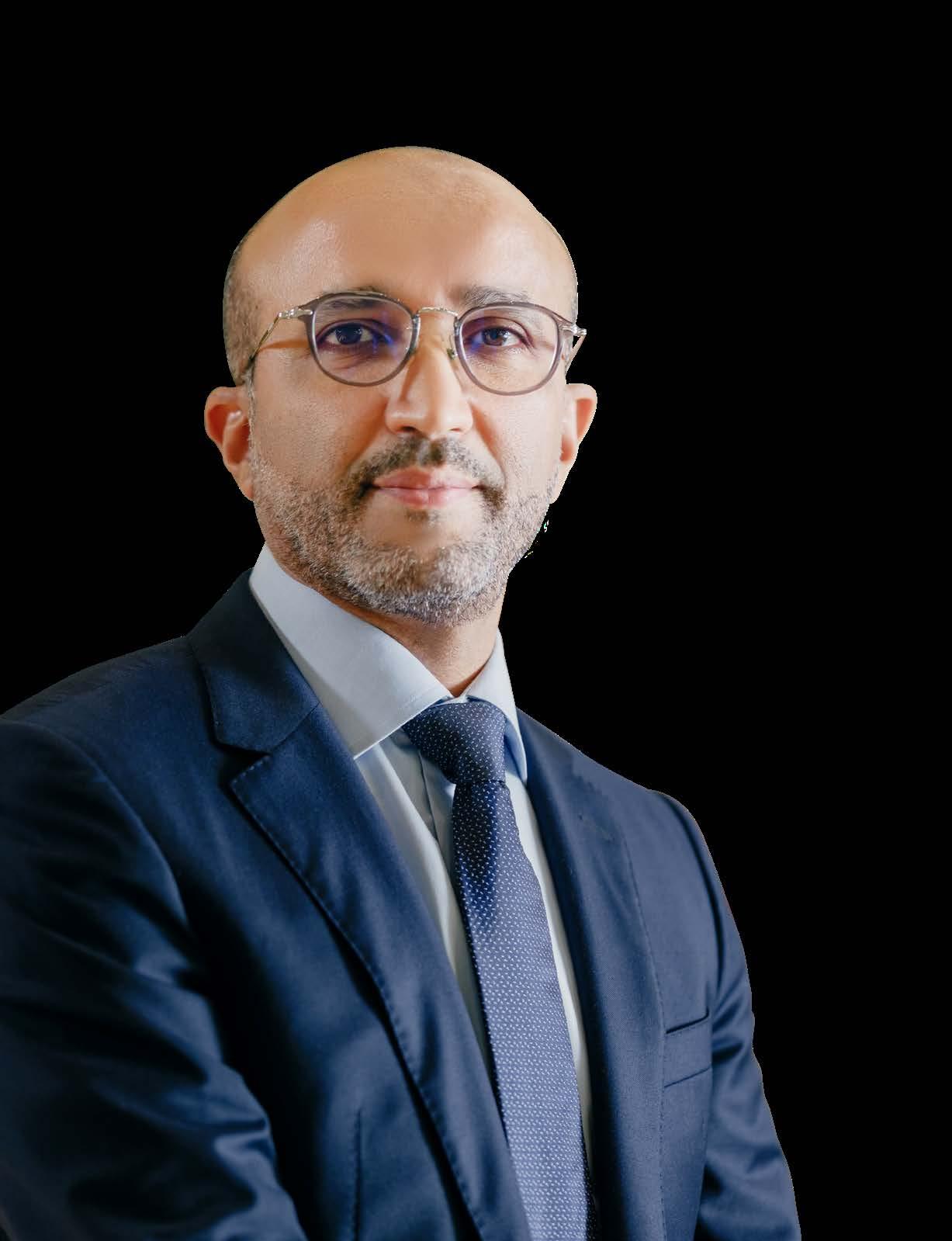
ENGINEERING THE INVISIBLE FOUNDATIONS OF AI
Mohammed Retmi, Core42, on how sovereign infrastructure is powering the UAE’s AI future.

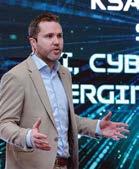
E-mail: mark.forker@ cpimediagroup.com


Mohammed Retmi, Core42, on how sovereign infrastructure is powering the UAE’s AI future.


E-mail: mark.forker@ cpimediagroup.com
GITEX Global 2025, will be the 45 th iteration of the Middle East’s flagship technology conference.
However, this year’s edition is tinged with sadness, as it will be the very last GITEX at Dubai World Trade Centre.
Dubai World Trade Centre has been the home of GITEX since its inception in 1980.
The event has grown year-on-year and now has expanded into one of the world’s biggest technology and IT symposiums.
GITEX has expanded into Europe and Africa, and in many respects has been the victim of its own success and has now outgrown its spiritual home in Dubai World Trade Centre.
Next year, GITEX will move to the Dubai Exhibition Centre at Expo City Dubai, the world’s most anticipated new global exhibition hub that will be adjacent to the world’s largest, most advanced and futuristic $35bn Al Maktoum International Airport project.
So, whilst it might be leaving DWTC, GITEX as a world-leading technology conferences continues to go from strength-to-strength, and its momentum shows no signs of abating.
As always, we have a superb bumper edition of October’s GITEX edition of CNME.
On the front cover of this year’s CNME GITEX magazine, is an interview with Mohammed Retmi, VP of Sovereign Public Cloud at Core42.
Core42 is part of the G42 machine and plays a critical role in helping the UAE achieve both its cloud and AI goals.
As Retmi pointed out during our discussion that for AI to work, you must first enable the cloud, and he reinforced the viewpoint that sovereign public cloud remains the cornerstone of Core42’s strategy and its contribution to the broader G42 vision.
It’s an excellent read, and a great insight into what Core42 does, so I would highly recommend that our readers check it out in full.
CNME also sat down with Girish Rishi, CEO of Cognite, to learn more about their decision to incorporate a new entity in Abu Dhabi last month.
Cognite has firmly established itself as one of the key market players in the world of Industrial AI, and its decision to have boots on the ground in Abu Dhabi also cements that status.
In a wide-ranging interview Rishi stated that the duopoly of their industry domain knowledge coupled with their modern tech stacks were the company’s ‘secret sauce’.
The topic of sovereign AI also features prominently in our October issue.
Dr. Abdulla Al Nuaimi, CEO and Founder of NX Digital Technology, outlines the reasons why government entities must reclaim AI sovereignty.
He highlighted the pressing need for governments to move away from the model of using AI to owning AI, to give themselves control over the direction of their digital future.
Mohannad AlKalash, Vice President, Middle East, Turkey, Africa and Pakistan at Zoom, walked us through the new capabilities of its AI Companion 3.0 – which he believes will reshape and transform workplace collaboration.
There are a whole host of other brilliant interviews for our readers to get their teeth stuck into in this month’s magazine.
I’d like to end my editorial letter, by wishing all our customers and partners a successful GITEX Global 2025.
It promises to one of the biggest to date, and as aforementioned above, it’s the last time it will be at DWTC.
As always, CPI Media Group will be at GITEX conducting interviews every single day as we try to unpack all the news emerging from the conference and ultimately try to determine what that all means for the tech sector across the region.
I am also going to use GITEX as an opportunity to launch my new podcast series entitled ‘Put a Fork in It’ – where I’ll speak with all types of stakeholders from the IT industry on the pressing matters of the day when it comes to technology.
We appreciate that GITEX is incredibly busy for everyone, but if you get a moment, then please do drop by our stand in H16-18.
Mark Forker Editor
Everything you need to quickly add video to meeting rooms and open spaces. Experience all-in-one video conferencing that combines crystal clear video, powerful audio, and AI-driven features, all integrated into a single 65-inch touchscreen.

SCAN QR CODE FOR MORE DETAILS
We provide headsets that support native Bluetooth, from entry-level to advanced. Find one that meets your company’s needs.

SCAN QR CODE FOR MORE DETAILS

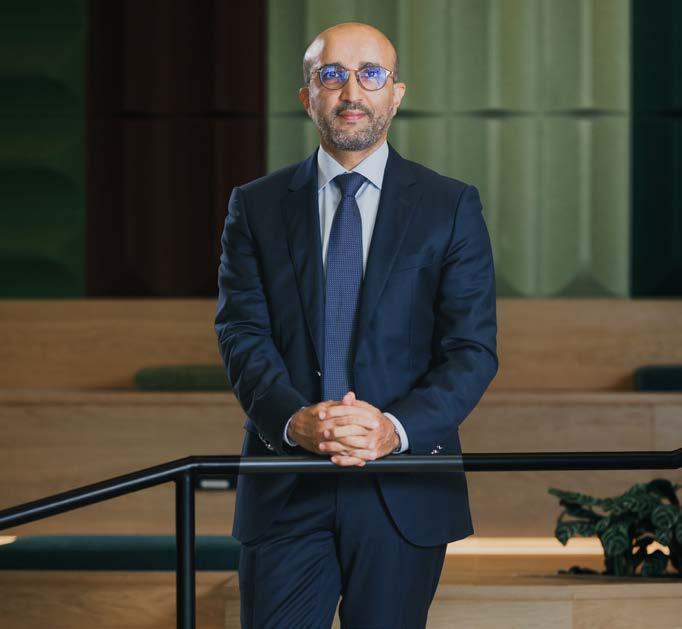
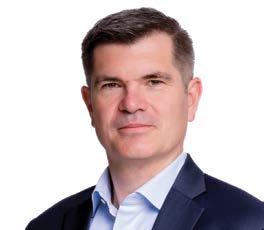
CNME rounds up the biggest regional and global developments in enterprise technology, which includes the news that WhatsApp debuts their new real-time translation feature, China places a ban on the sale of Nvidia chips to domestic companies - and OpenAI signs a MoU with Microsoft.
kausar.syed@cpimediagroup.com
14
32
Hannes Liebe, Regional President, APJMEA at IFS, outlines their differentiated approach to Industrial AI.
Fissal Oubida, General Manager - Middle East, Africa and India, at Lexar, highlights how their new suite of Armor memory and storage solutions are designed to handle intensive AI-driven workloads.
36
Pierpaolo Taliento and Thomas Rizkallah from Cloud Software Group, and Francois Van Deventer from Citrix, highlighted how unified workspaces were completely transforming the modern enterprise experience.
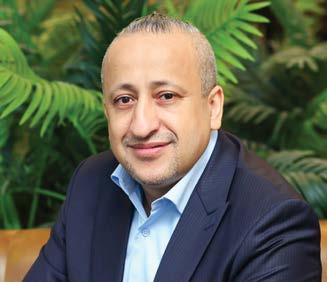
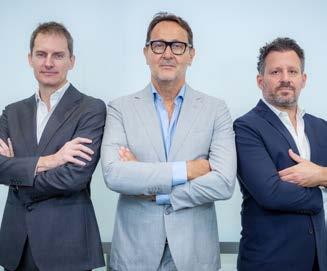
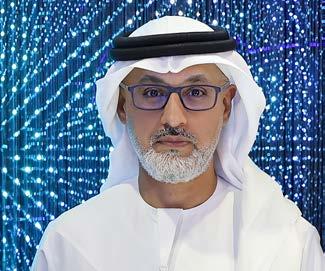
50
Dr. Abdulla Al Nuaimi, Founder and CEO at NX Digital Technology, stresses the need for government entities to reclaim AI sovereignty.
54
Moninder Jain, VP and Head - Global Emerging Markets, at Logitech, explains how their smart collaboration tools are designed to reduce complexity in the workplace.
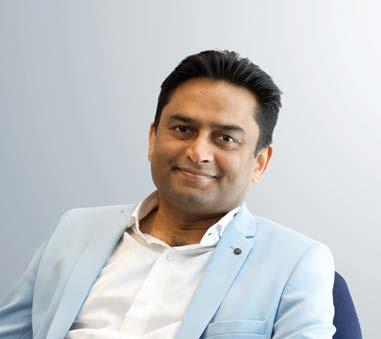
Amidst the ongoing trade tension between China and the U.S., a regulator in the country has reportedly ordered domestic technology companies to stop buying Nvidia AI chips.
The Financial Times reported the Cyberspace Administration of China told companies, including TikTok parent ByteDance and Alibaba, not to purchase Nvidia’s RTX Pro 6000D which it explained is a chip designed for use there.
Nvidia CEO Jensen Huang told CNBC his company “probably contributed more to the China market than most countries have” during a press conference in London.
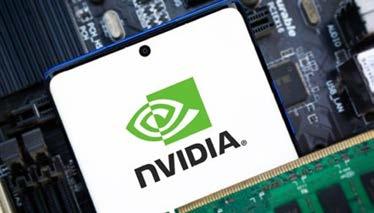
“And I’m disappointed with what I see,” Huang said, according to CNBC. “But they have larger agendas to work out between China and the United States, and I’m understanding of that”.
He told the news site Nvidia has guided financial analysts not to include China revenue in financial forecasts.
Nvidia has been in the middle of a tug of war between the administration of US President Donald Trump and the government in China.

WhatsApp, the instant messaging application owned by Meta, recently began the roll out of a new message translation feature for Android and iOS devices to enable cross language chats among its vast user-base over over three billion.
In a blog post on the 23rd September, WhatsApp stated translations will initially be available in six languages on Android devices and 19 languages on iPhones, with more to follow.
When users see a message in a different language, they can longpress and tap “translate” to select the language they want the message to be
converted either from or to.
The feature is available across one-onone chats, groups and Channel updates.
Android users will be able to turn on automatic translation for an entire chat to see future messages in their preferred language.
To alleviate privacy concerns, the company stated the translations occur on users’ devices where WhatsApp cannot see them.
“We hope this feature helps break down language barriers and allows users to connect more deeply with loved ones and communities around the globe”, it added.

CCS Insight recently expressed concerns that mobile operators may not be prepared for what it expects is a multi-billion-dollar opportunity in the travel eSIM sector.
They went on to note that specialist players are already active and challenging the traditional roaming revenue model used by existing operators.
In a statement, Director of Consumer and Connectivity Kester Mann highlighted the arrival of specialist service providers, falling prices and growth in remote provisioning as key challenges to the established roaming sector.
CCS Insight pegged the number of travel eSIMs provisioned in 2024 at 70 million and predicts the figure to exceed 280 million by 2030.
Mann said consumers are rethinking how they get connected when travelling and urged mobile operators to do the same. “Travel eSIM offers fresh opportunities to target lapsed or nonusers, expand into new countries, build better engagement with customers and diversify into new markets.”


The latest survey data from SANS Institute, the world’s most trusted provider of cybersecurity training, reveals that 80% of organisations rank social engineering as the number one humanrelated risk—an already formidable threat now supercharged by AI.
As attackers use artificial intelligence to craft more convincing and scalable deception tactics, the stakes for human error have never been higher. The data was a key insight from the 10th anniversary edition of SANS Institute’s Security Awareness Report®: Embedding a Strong Security Culture.
The report is based on SANS’s largest survey ever, with feedback from over 2,700 security awareness practitioners from more than 70 countries who

shared their unique perspectives to create the most comprehensive and revealing report yet.
Lance Spitzner, Technical Director of SANS Workforce Security & Risk Training, highlights the report's
significance on its 10th anniversary: "The launch of the 10th edition of our Security Awareness Report is a major milestone for us and our most ambitious and far-reaching report to date. Designed as a dual-purpose playbook, it empowers security awareness professionals to not only drive organisation-wide behaviour and culture change but also advance their careers".
Spitzner concludes: “This year’s findings come against the backdrop of organisations facing rising threats like generative AI, deepfakes and other emerging threats. The report delivers timely, data-driven insights into how security teams are adapting, where gaps remain and which strategies are moving the needle. In a field where human risk is still under-reported, this report shines a spotlight on one of cybersecurity’s most urgent challenges”.

OpenAI recently signed a non-binding memorandum of understanding (MoU) with Microsoft to agree new terms on their existing partnership. This move was seemingly calculated with the intent to advance the AI company’s plans to restructure. In a short statement, the companies revealed they are working
to “finalise contractual terms in a definitive agreement”, while remaining focused on “delivering the best AI tools for everyone”.
The announcement marks a major step forward in ongoing talks between the pair to sign a fresh deal, as OpenAI looks to overhaul its structure and establish a for-profit division to boost
its access to capital and fund its development.
Under initial proposals, OpenAI planned to convert its non-profit business to become for-profit. However, the company revised the plan and stated in May its nonprofit entity would control the whole company, including a for-profit unit.









RNS Technology Services announced the successful conclusion of the RNS CyberDefense Roadshow 2025, delivered across two UAE venues: Grand Hyatt, Corniche, Abu Dhabi and Taj, Business Bay, Dubai. Designed to translate strategy into action for security and technology leaders, the roadshow united their customers, and industry experts around the theme “Cybersecurity Reimagined: Zero Trust in the Era of AI Evolution”. Across both locations, the program drew strong participation and positive feedback for its focused format and practical relevance.
“We are extremely proud to share that the RNS Cyber Defense
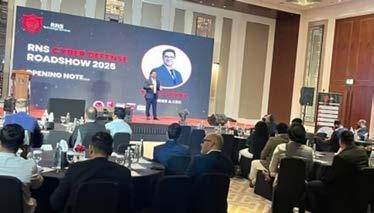
Roadshow 2025 was a grand success, powered by incredible participation from both the customer and vendor community”, said Samir Chopra, Founder and CEO of RNS Technology Services. “It’s an honour to note that this edition has been recognised as one of the most insightful and wellreceived cybersecurity events in the UAE. Thank you to all who brought energy, insights, and deep technical discussions on different Cybersecurity aspects. Looking forward to many more such collaborative gatherings in the future!”
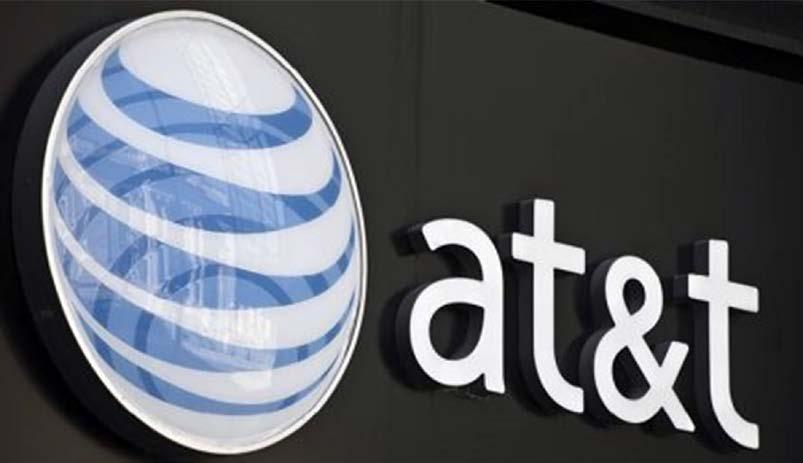
AT&T recently started testing an agentic AI digital receptionist with its phone customers. This tool is designed to reduce unwanted calls by screening and managing incoming calls automatically.
Chief Data Officer Andy Markus explained in a blog the digital assistant uses multiple large language models (LLMs) to process incoming speech, create responses and turn those responses back into speech.
AT&T did not reveal the LLMs involved, but previously employed OpenAI’s ChatGPT, Falcon AI and Meta Platforms’ open-source Llama.
Markus told Mobile World Live (MWL) AT&T started building and testing the digital assistant earlier this year.
The tool complements AT&T’s existing spam protection systems by using advanced voice-to-voice technology and agentic AI to identify spam and fraud calls based on the operator’s extensive data and algorithms.
“It determines whether the caller is human, how urgent the call is and if it meets your customised criteria,” he stated in the blog. “If
the call passes all the checks, the digital receptionist lets the call through to you and drops off the call completely.”
The assistant also decides if it can act autonomously by taking a message or accepting a delivery window. If callers do not identify themselves, called the wrong number or if user criteria are not met, the receptionist will disconnect or take a message.
“While the digital receptionist is talking to the caller, you can watch a live transcript and pick up at any time” or decide next steps based on a text summary, Markus noted.
Trusted contacts can bypass screening entirely and the system learns user’s preferences over time. Markus wrote the assistant features AT&T’s security and privacy policies to protect personal information. In future, the assistant could make reservations by calling establishments.
“This digital receptionist could also eventually handle phone calls that are important but you can’t take at the time, by getting directions from you in real time with text prompts.”






According to Kaspersky’s “Growing Up Online” research results, nearly half of all the survey participants (48%) from the Middle East, Türkiye and Africa (META) post pictures or videos of their children or share posts about their children on social media. 57% of these parents also add some additional personal information with the post, like for instance the name of the child (53%), geolocation (33%), or stories from the child’s life (37%). At the same time, 28% share this information while having no privacy restrictions on their social media accounts, and are therefore
letting anyone see it. Such behaviour can put children at risk by exposing their identity, location, and/or personal moments to strangers, who could potentially misuse this information.
“It is difficult to determine the line between sharing information that is safe and compromising a child's safety. However, it is essential to resist the urge to share too much online, as this can put children's safety and privacy at risk. Sharing personal details with strangers can expose children to identity theft, stalking, and exploitation. It can also affect a child’s digital footprint,
potentially leading to embarrassment, bullying, or reputational harm later in life. Additionally, children may feel a loss of control or resentment about their online presence as they grow older”, explains Kim Grobbelaar, Consumer Channel Manager in the Middle East and Africa at Kaspersky.
To safeguard our children’s data and to share safely, Kaspersky strongly recommends following this advice:
1. Limit access to your social media profiles and make them visible to friends only (but always mind that you add to the list of friends the people you know personally). Do not forget about general safety settings such as two-factor authentication in the Instagram app and a secure password.
2. Do not share the materials that may cause any harm for your child – that includes personal photos and videos, other information that is not meant for public – the contacts of your child, the name of their school, etc.
3. Think about a reliable security solution like Kaspersky Premium. It incorporates the Kaspersky Safe Kids module and helps to guard family members and private data.
Qlik®, a global leader in data integration, data quality, analytics, and artificial intelligence (AI), recently announced the rapid adoption of Qlik Predict, as enterprises turn to real-time, explainable forecasting to drive smarter, faster decisions at scale.
Built for enterprise-grade reliability and governance, Qlik Predict transforms how organisations leverage machine learning, putting no-code predictive models directly in the hands of business users across functions.
Qlik Predict is AI operating at scale today across leading global businesses. The solution operationalises predictions by embedding them into frontline

workflows. Whether it’s forecasting demand in manufacturing, predicting patient outcomes in healthcare, or anticipating churn in financial services,
Qlik Predict brings clarity and actionability to every decision point, all without requiring advanced technical expertise.
“Executives are racing to turn AI from promise into performance where decisions happen hour by hour”, said Brendan Grady, Executive Vice President and General Manager of Qlik’s Analytics Business Unit. “Qlik Predict embeds trusted forecasts directly in workflows, so frontline teams build and use models through a no-code experience while IT retains governance and auditability. Customers are converting pilots into production outcomes at scale with faster decisions, clearer accountability, and measurable impact”.


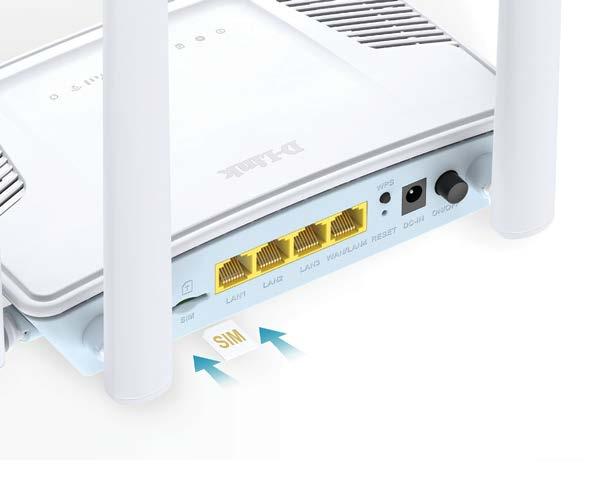
CNME Editor Mark Forker sat down with Hannes Liebe, Regional President, APJMEA at IFS, to find why events like IFS Connect in Riyadh are becoming increasingly important as AI continues to transform everything, the critical importance of domain knowledge in solving key business challenges, their differentiated approach to Industrial AI – and how their IFS Cloud unifies ERP, EAM and FSM into one composable platform.
Hannes Liebe has a proven track record of building high-performance teams in what to date has been a hugely impressive career, one that has been him work for companies such as SAP, Finastra and now IFS.
Liebe was initially appointed as the Chief Operating Officer at IFS in April 2024, before his promotion to Regional President, for the Asia Pacific, Japan, Middle East and African markets.
IFS have a series of global roadshows that they take on the road entitled ‘IFS Connect’ – and their Middle East and Africa edition kicks-off in Riyadh, later this morning.
The IFS Connect series drive great value for customers and partners globally, but according to Liebe, one of the most important benefits of the roadshows are the fact that they bring industry peers together to tackle the biggest issues impacting the industry head-on.
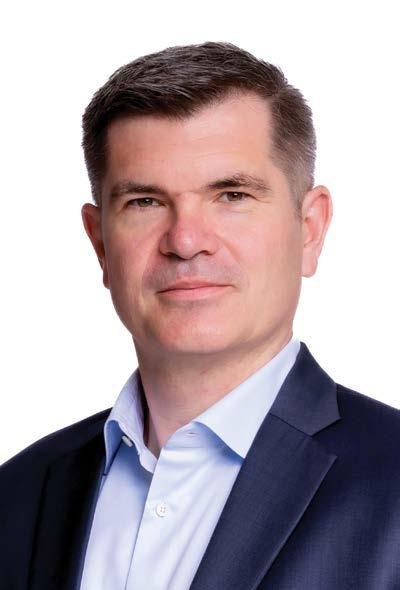
“Riyadh is the last stop on what started in the United States. We have been in Japan, Europe and now the Middle East and Africa. I believes the IFS Connect roadshows are inspirational as they allow us to share our vision. There
is a very strong focus, and especially in the Middle East region to be very execution orientated. On the other side of the coin, we also want to bring industry peers together to discuss how we jointly as an ecosystem of stakeholders tackle the challenge that is ahead of us. AI is a tectonic change in the physics of our industry, and I think it’s fair to say that nobody has the answer. We are all walking on this journey together, and that’s why I believe these events become even more important whilst we are all in the midst of this tectonic shift in our industry – and there is no better place to have these conversations than Riyadh,” said Liebe.
Liebe acknowledged that there is no general consensus in terms of what is the best approach when it comes to unleashing the potential of AI across the industrial sector.
“I think everyone shares the realisation that AI is fundamentally changing the way we do business. However,

the approach in terms of how we address is certainly differs, and I see a wide array of thinking on the matter. On the one side people are looking at it from the point of view that’s it all about execution and helping me get my job done and I don’t need all this fancy stuff. Then on the other side you have this sort of overhyped element, which is more on the experimentation space. We believe that Industrial AI must be in context and has to be at the process level in order to make sense, which is especially acute for us when you consider our focus into heavy asset industries. Traditionally, heavy industries have always been focused on getting the job done. It simply must work, if you operate in a sector such as Oil and Gas then all the stuff has to work,” said Liebe.
Liebe highlighted the critical importance of domain knowledge when it comes to successfully executing Industrial AI.
“Deep industry domain
knowledge is so important, and that is what we have in abundance because we have been building applications in this arena for the last 30 years. Technology is not the key differentiator, domain knowledge and process relevance are the key differentiators. Adopting technology for the sake of it doesn’t work, and that’s the underlying problem with a lot of the investments that have been made into AI. You need to understand the business and you need to establish what the problems are, and then look at how technologically you can solve them, and this is not happening in a lot of industries,” said Liebe. Liebe explained how IFS adopts a very differentiated approach to AI.
“Our approach to AI has three pillars. The first pillar is Industrial AI that is embedded into our platform IFS Cloud. This is in the moment and in the context where a user can leverage AI capabilities, but it is in the process itself. The second pillar is in the loops, which is Agentic AI, and that solves on a work package level a problem that can be performed by an AI agent. The final pillar is Nexus Black, which is a forward deployed and elite engineering team that goes into customer
situations where the endto-end process coverage is essential. The Nexus Black team built the solution together with the customers onsite and did it in most cases in days and weeks, and not months. However, the critical component in all of this is to really understand how I can solve the business problem, and that is key,” said Liebe.
IFS Cloud has resonated massively with the Middle East marketplace, and Liebe explained the factors behind its success across the Gulf region.
“Our message around Industrial AI, and IFS Cloud as a platform to enable this on the process level has received a hugely positive response from the Middle East market. I think a key part of our success has been the combination of having that composable platform that has AI embedded into it and in a contextual way where it all makes sense. One of our customers is one of the largest utility providers in the Middle East region is using our optimising engine for thousands of their field technicians. It is constantly recalculated as to who goes to which job, at what point in time do they go, and ultimately who is the right person to do the job. That is AI-enabled, because you can’t do that anymore with normal
We believe that Industrial AI must be in context and has to be at the process level in order to make sense, which is especially acute for us when you consider our focus into heavy asset industries.”
technology, and that’s all in production,” said Liebe.
IFS Cloud unifies ERP, EAM and FSM into one composable platform, and Liebe believes that this is a key market differentiator for the company, describing it as unique.
“It is a unique platform. The merging of asset management, service management and ERP into the one platform with one AI layer and one data model is totally unique in the marketplace. Even if you decide to do one component of it, it’s completely composable. I think given our strong industry focus, and the fact that we are quite narrow helps us. We can deliver the level of depth that our customers would expect, but also at the same time gives us agility because we don’t need to maintain 28 industry solutions, so we are agile. Due to the architecture of the solutions we can also ingest new solutions and new tools much easier,” said Liebe.
In August of this year, IFS announced the acquisition of AI-powered supply chain management provider 7bridges, and Liebe highlighted the positive impact the acquisition will yield for its composable platform.
“We recently acquired 7bridges, and this is an AI simulation tool for automatising logistics and logistical networks, and this acquisition makes a lot of sense when you think about our market footprint that we have in asset heavy industries. We can now through the composability of the platform

ingest solutions in a much, much easier way, and it makes sense for us in sectors like defence and manufacturing,” said Liebe.
Countries such as the UAE and the KSA have made no secret of their ambitions to become leaders in sustainability, but the economies, especially that of the KSA are heavily dependent on the asset heavy industries such as Oil and Gas.
We know that the KSA is trying to diversify its economy and reduce its dependency on Oil and Gas through its Vision 2030 plan, but the issue of sustainability remains a pertinent subject.
AI is energy-intensive, and the demand for AI datacentres is set to grow exponentially in the next few years across the Middle East following the announcement of the Stargate project.
Liebe believes AI can be a solution to the sustainability challenge facing companies from asset heavy industries, who are under pressure to become more sustainable.
“Sustainability has moved from being a CSR activity, but
it moved to become a true boardroom consideration, and in the Middle East it became a national imperative. The level of energy intensity in asset heavy industries has to be reduced, but in fact, many of them are leading in green transformation. Many of them are pressing ahead and are saying we’re going to be the first to do this because we understand this now. What IFS and AI can do here is expose inefficiencies in the process. Take predictive maintenance in its raw form, ultimately it reduces a waste of energy. If I schedule a service technician more effectively then I save on kilometres that they drive means I have reduced my carbon footprint. If you do that on top of your logistics then your carbon emissions are drastically reduced. There is a big angle to all of this that we haven’t tapped into yet as an industry, but I think think this opportunity will eventually emerge, and when it does it will be lucrative. If I can reduce overproduction for a customer then that’s a lucrative opportunity,” said Liebe.
Technology is not the key differentiator, domain knowledge and process relevance are the key differentiators.”


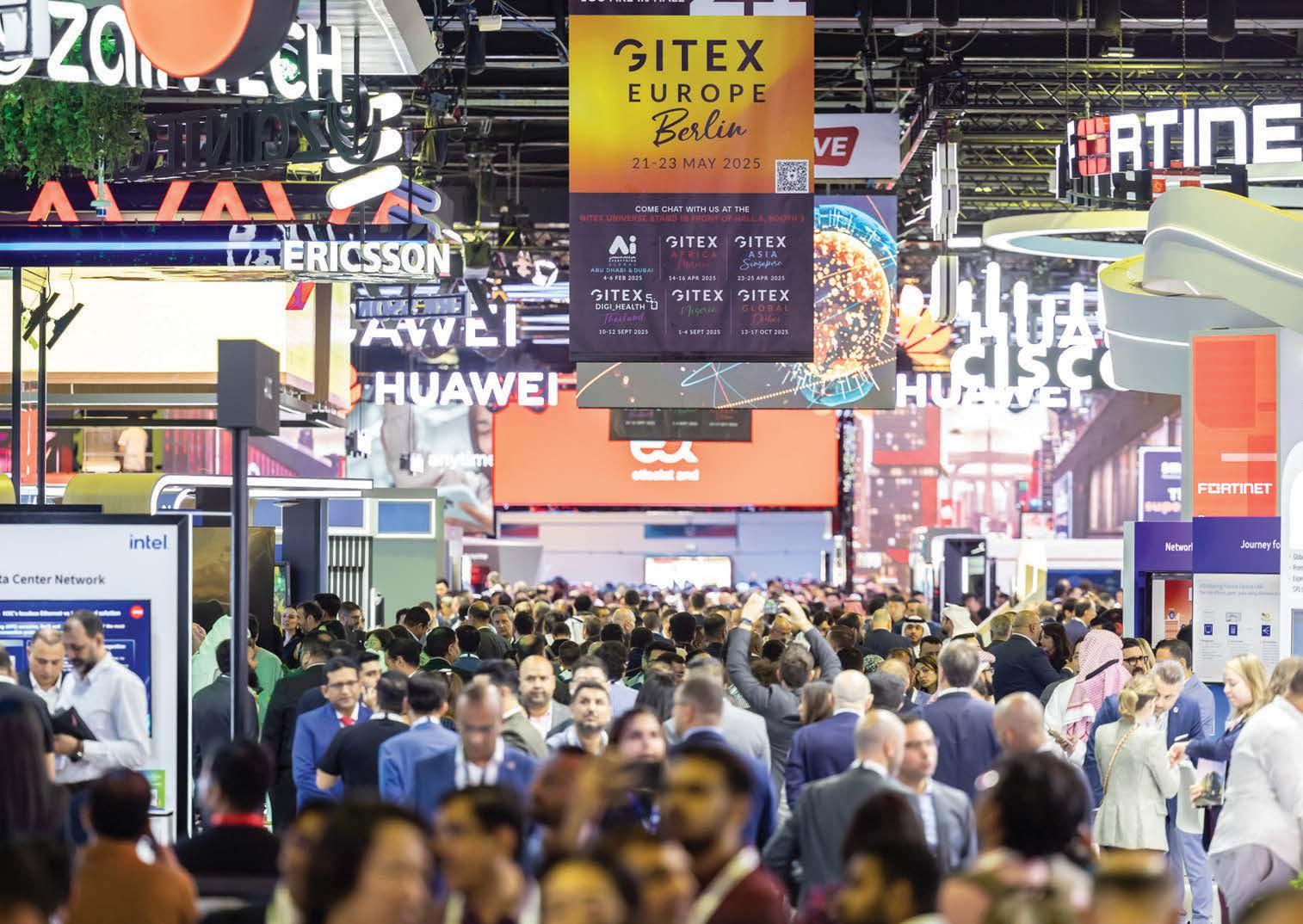

CNME Editor Mark Forker spoke to Dr. Tim Currie, CEO of AI consulting company Nova, and author of the book Swift Trust: Mastering Relationships in the Remote Work Revolution – in an effort to find out how there has been such an erosion of trust in our ‘work from anywhere world’, and how many organisations globally have been guilty of losing sight of the importance of human connections in the workplace.
Dr. Tim Currie has often described himself as an author, advisor and innovator, and that’s a fairly accurate depiction on what has been a remarkable career to date.
Currie first established himself as a leader in the cutthrust world of sales and has generated more than $100m in revenue for the various tech companies that he has worked for throughout his career and include AWS and DXC Technology, to name a few.
However, over the last 10 years, Currie has worked with high-tech consulting companies that are backed by private-equity companies that have disrupted multiple industry verticals and enjoyed huge growth.
Currie quickly ascended to the top of AI-consulting company Nova, where he is now the Acting CEO, having joined the company as VP of Growth in 2024.
Currie was acutely aware of the fact that he was good at building sales teams, but he realised that he had a passion for driving organisational change.
That led Currie to begin a doctorate program, and his dissertation was focused on
trust in the remote workplace.
Fast-forward to June 2025, and Currie penned another chapter in her remarkable career (pardon the pun) when he launched his book entitled Swift Trust: Mastering Relationships in the Remote Work Revolution.
I kickstarted our conversation by asking him
what the term Swift Trust meant?
“The term Swift Trust came out of research that was conducted about 20 years in virtual remote teams. At its core, what it means is a very professional level of trust. It is very transactional, very surface-level, you trust me to get the job done, and I trust
I think it’s fair to say that smaller organisations handle remote working much better, quite simply because there are fewer layers.”

you to pay me if I do the job right. What they discovered with these global virtual teams was that attitude of I’m going to trust you do the job and together we’ll get this project done because I’m sitting in an office with people I’ve known for years and those are my strong interpersonal relationships, and those are who I depend on to be able to get things done. I’m going to trust you until I have a reason not to. However, what we’re finding in both my research and practical experience is that ability to compartmentalize your work life and being very transactional about those relationships is now working its way into a sort of permanent state, and that’s why you’re seeing studies emerge from Gen Z wanting to go back into the office because they want those interpersonal connections,” said Currie.
In his book, Currie cites an internal study that Microsoft conducted with 250,000 of their employees.
The results conjured up a quite staggering disconnect between employees and managers.
87% of employees surveyed felt they were highly productive, but only 12% of managers agreed.
Currie believe that the hidden cost of remote work has been the erosion of trust.
“I think it’s fair to say that smaller organisations handle remote working much better, quite simply because there are fewer layers, there’s not the same level of bureaucracy or organisational charts
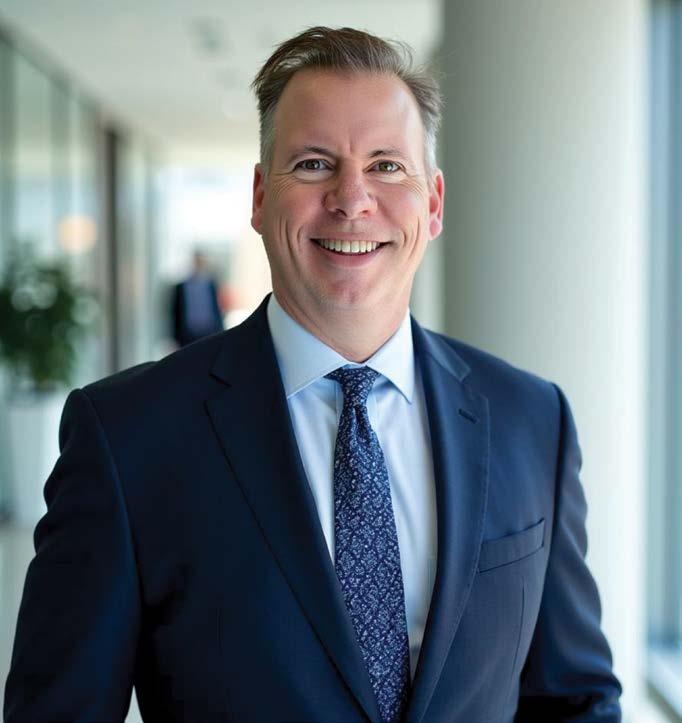
between you and the people that make the decisions that greatly impact your future. However, the same can’t be said of larger organisation and they struggle for a multitude of reasons, some of the issues are cultural, some are process, or organisational design related, and some of the are because of technology and how they use platforms to communicate within their organisations. As far as the state of play goes, I expect large organisations to continue to push for a return to the office, especially the non-tech businesses, but even some of the technology companies will proactively
push for a return to the office,” said Currie.
The CEO of Nova stated that advocates of remote working can provide all the studies and statistics they want to prove remote workers are productive, but Currie is skeptical, describing it as a “red herring” when productivity is only measured in task completion.
“If you measure productivity based on task completion and task performance and have all your people on 10 hours of Zoom calls, then you’re going to get a lot of production out of those folks on task completion. However, what
you’re not going to get is innovation and outcomes that ultimately drive the success of an organisation. The outcomes are what makes it an amazing place to work, that fosters an environment where people want to go to work there every day. You can’t convince me that being on a Zoom call with your camera off, scrolling on your phone and with a TV on in the background is productive because it’s not. The reason they are scrolling on their phone is because they have been loaded up with all these non-fulfilling, autonomous, task-oriented meetings because you as a manager, or a business leader have not built a culture where that’s not required anymore,” said Currie.
Currie highlighted how organisations have been guilty of trying to superimpose the old world on the new world.
“It just doesn’t work in my opinion. In big organisations they have lots of meetings with a lot of people and there is a huge volume of emails being exchanged, and I mean in some cloudnative organisations they don’t even use email. If you ask a question, then you get a response by an emoji in a slack channel, so it’s not a meeting and it’s not an e-mail. I think the cloudnative businesses, generally the smaller more tech forward organisations can operate at a much more shared level of consciousness. I think it’s a red herring to say that remote workers are highly productive, even though they might think
they are because they are doing something at 10 o’clock at night,” said Currie.
The inception of remote working did not begin in March 2020 as a direct consequence of the COVID-19 pandemic, but there’s no doubting it was a major force in our remote work revolution that has ensued in the time that has since elapsed.
Currie pointed out that remote working in the technology industry has existed for over a decade, but crucially there was a culture, whereas now he argues that in our current remote work world there is no culture being built.
“It’s not a new thing for us in the tech industry to be working remotely, but there was a home office, there was a regional office, there was a satellite office where people showed up every day. Things got done and that’s where the company’s culture was built. But if you were working remote, it wasn’t because you didn’t belong in an office, they expected you to be with a customer. But when the customer is not in the office, and there’s no like local office, or point of presence then the culture doesn’t get built. In consulting we would also say the more time you spend with the customer the better. As a sales team, delivery team
or as a consulting team you wanted facetime with the customer. If you could embed into their culture so much that they wanted you to be with them off hours then that was considered as the Holy Grail because you’ve built all this trust, but that’s all gone now, and as a result the outcomes aren’t happening. All these things that for 100 years drove relationships between producers and consumers and how people built their careers are gone or have shrunk down so low that they’re highly commoditised, so your relationship now with your customers, peers and managers is all transactional,” said Currie.
Currie believes that under certain circumstances and for certain companies they are going to insist on workers returning to the office.
“I think CEOs and boards are going to make the call where they say we need people back in the office. We need to have a traditional approach to business and understand that we might lose that great consultant that lives in Oklahoma, or some of the sales team that don’t want to be in the office, but that’s the way it is. You’re going to win some and lose some. I know personally that customers and partners that are hybrid you’ve really got to orchestrate a lot to
It’s a red herring to say that remote workers are highly productive, even though they might think they are because they are doing something at 10 o’clock at night.”

get their time face-to-face because when they are in the office everyone wants to speak to them. It’s a tricky dance, and we haven’t figured it out yet and AI provides a sort of ominous backdrop to all of it. I’d tell anyone that is vehemently anti-office because they enjoy as we all do the autonomy and the flexibility of working from home to get back in the office. If they spend all day doing their job without ever being on camera, and without having to make hard decisions that requires them to trust and engage in human interaction then I wouldn’t get too comfortable, and I’d look to get back into the office as soon as possible,” said Currie.
Although Currie isn’t holding any punches when it comes to his unwavering viewpoint that remote working doesn’t deliver productivity that is outcomedriven, he does believe that hybrid work is here to stay, but that the system needs
a complete reconfiguration across the board.
“The future is hybrid, but my primary concern with hybrid work is that businesses are not approaching it thoughtfully from what I’m seeing in both my research and in my practical experience. How many stories have you heard about people going into the office, and their commute taking them over an hour only for them to discover that the people they need to speak to are not in the office that day. They jump on a Zoom call with somebody that’s sitting somewhere else, it just doesn’t make any sense. For a lot of people that is their in-office experience now because they don’t have what I would describe as the infrastructure or culture when it comes to hybrid work, the current system is totally dysfunctional across the board and needs to be completely reconfigured and carefully thought-out,” said Currie.
However, Currie does have
a remedy for hybrid work dysfunctionality.
He believes organisations need to become ‘hyper local’ — to differentiate the inoffice experience, otherwise why go back to the office?
“I believe that organisations need to become hyper local. If I have an office in Chicago where I live then there has to be a reason for that office, and if I’m going into that office then I have got to be talking to people, and have to be directly communicating with people that are focused on the Chicago market and customers that are based and operating out of Chicago. What happened during the pandemic was that many businesses reorganised their sales teams, so they are vertically aligned, but not regionally aligned. So, your boss is in Washington DC, and the rest of your team is in Seattle, but in my opinion that sort of business model needs to get reengineered. It’s an organisational design structure that I believe not a lot of businesses are ready for, but the change must happen, and businesses need to become hyper local, otherwise why go back to the office? Before the pandemic people were much more focused locally in that office and region, but everybody is virtual nowadays, so people can go after talent that lives outside of our core hubs. However, what that creates is less reasons for having an office, but also it lessens the opportunity for you to regain what you lost, so hyper local is the answer,” said Currie.
CNME Editor Mark Forker sat down for an exclusive interview with Girish Rishi , CEO of Cognite, to learn more about how the company has established itself as a global leader in Industrial AI, the significance of its decision to incorporate a new entity in Abu Dhabi, and how the duopoly of their modern tech stacks coupled with industry domain knowledge is their secret sauce.
It is fair to say that in the global IT ecosystem, some technology leaders can be guilty of engaging in hubris, declaring that their specific solution, or product is an industry gamechanger. However, that is an accusation that certainly can't be labelled at Girish Rishi, CEO of Cognite.
In what has been a hugely successful and decorated career to date, Rishi has demonstrated his ability to deliver time-after-time.
He was a key figure in Symbol Technologies, which was acquired by Motorola, where he was Senior VicePresident for almost a decade, and he was also the CEO of Blue Yonder for 5 years, before its acquisition by Panasonic in 2022.
Girish is now in the box seat at Cognite, where he is driving the company's rapid growth in multiple markets worldwide.
He began our conversation
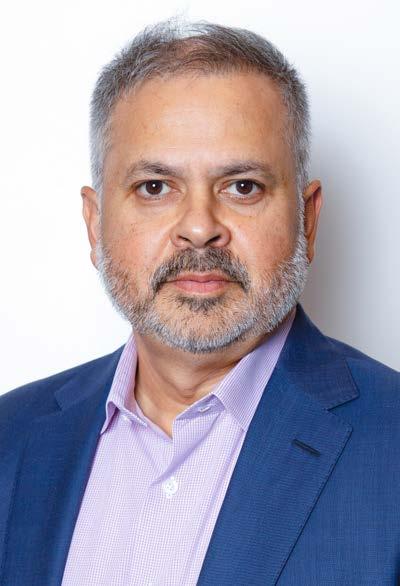
by providing more detail on the business model that is adopted by Cognite.
Rishi explained that Cognite helps large companies better understand all the data that is generated on the factory
floor, and said they were in the business of 'finding relationships'.
"Factories tend to have data in a multi-modal capacity, such as data, voice, video, images and documents, and what we do is pull all that data in to what we call our industrial knowledge, and that process subsequently leads us to create a knowledge graph. Our objective is to find relationships, and ask questions, such as do you have equipment that was deployed in 2002, how often was it maintained, what components of that model broke down? If you had downtime, and production was completely halted, what was the root cause analysis on that? This is what Cognite does, and we initially started off in the energy space, and then we expanded into utilities and process manufacturing, which is a very large segment for us, and also chemical manufacturing, paper and metal. We are also getting into discrete manufacturing, and most recently we have onboarded customers from pharmaceutical life sciences," said Rishi.
Rishi described the platform as a 'marvel' - and expressed his great pride at the capabilities of the technology that he inherited as leader of Cognite.
"We have a single version, very contemporary product that was built on the cloud and that actually transcends industries within the industrial segment. So, whilst the tech stack is very
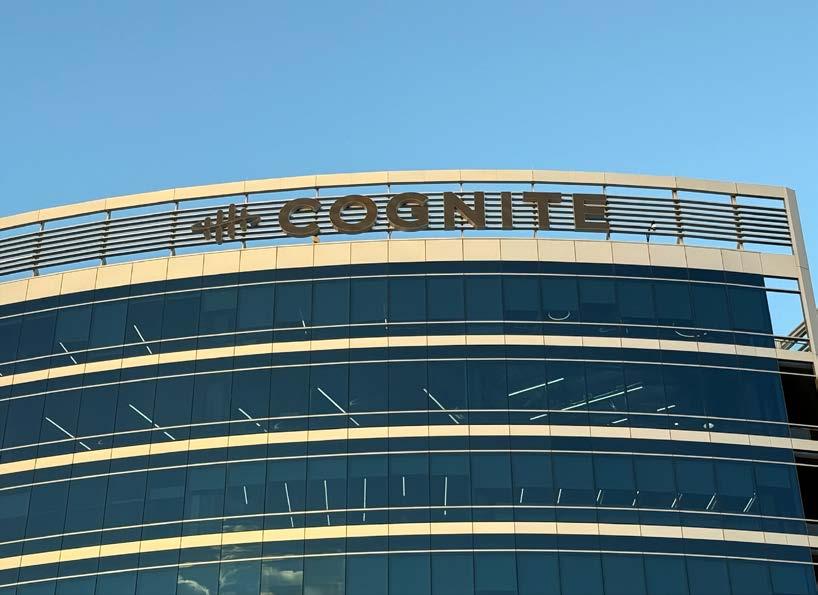
contemporary, the domain knowledge of industry is key. How is oil pulled from the ground, how is equipment manufactured, how are the factories run, how are the assets maintained, and how do you reduce risk? This is what we do for a living, and we have the creme de la creme of customers worldwide from Houston to Tokyo," said Rishi.
Traditionally, heavy-asset industries have been slow to adopt and modernise their operations, but there undoubtedly has been a sea-change amongst leaders within the industry over the last 3-5 years.
A recurring theme in terms of customer pain points for Cognite, was that of unstructured data.
"The customers we were working with had structured and unstructured data, and in truth to describe it as being all over the place would be an accurate representation. The primary focus for us was all
about access, you have to be able to access the data, and we have something we call extractors. The industry calls them plug-ins, but essentially the extractors allow us to go in to pull documents, pull time series data, and go to programmable logic controllers and pull data in. We have created a library of extractors that allows us to go into factories anywhere in the world, and in a matter of a few days, we are able to pull the data in. At this point, the drawing of the relationships starts to come into play, and that's where we create the knowledge graph," said Rishi.
Rishi highlighted how their approach with their library of extractors has completed transformed processes, that
traditionally in some cases could last for months.
"Factory managers and people who run operations where spending weeks on certain tasks, and root cause analysis in some instances can take months to resolve. So, tasks they were spending weeks on can now be done in a matter of minutes using our technology. Now, that is transformation and that is transformational. We have huge customers like Aker BP, who are our original customer in Norway. Celanese, who are headquartered in Dallas and Japanese energy company Idemitsu to name just a few, who will be sharing their success stories with us at our user conference in Houston next month," said Rishi. Rishi went into more detail on their business model, describing Cognite as a front office on the factory floor tool set.
"Our business model results in forward deployed engineers who come from the industry, so they've got that deep industry knowledge. I'd say that in our delivery services team across the company almost half of our people were chemical engineers who have worked on a factory floor, or oil rig. They can go into these refineries and factories and totally understand that environment. We have that acute domain knowledge, and
Our business model results in forward deployed engineers who come from the industry, so they've got that deep industry knowledge.”
that's a key differentiator for us," said Rishi.
Another key differentiator for Cognite is their very hands-on approach with customers, which pales in contrast to the way industrial software providers have previously operated in the past.
"We are incredibly customer-centric.
Traditionally, the industrial software space has been served by providers who have built monolithic systems and have told factories that they shall do according to me. Or they have said if you want to it your way, here is the additional money you have to pay, and I'll customise it for you. That's the history of factories. Our approach is to come in and say whatever format your data is, alphanumeric, video, documents, we're not going to say you shall use Google, or Microsoft, or AWS. We run on all three hyper-scalers because we know that today we live in a multi-cloud world," said Rishi.
Cognite is also giving customers that same choice, autonomy and flexibility when it comes to their Industrial AI and data platform.
"Our AI platform is increasingly seeing great momentum, and I think a key reason for that is we are saying we work with any Large Language Model. So again, we are not coming in and forcing customers to go in a certain direction by saying we will only work on time series data on Microsoft, or Open AI. We're giving them
choice, and at the end of the day it is their platform, we are deploying our people, but they can have as much control on it as they want. They can put their own engineers and developers on it, and that's our model, and it is one that is resonating greatly with the marketplace," said Rishi.
The conversation then shifted towards the decision by Cognite to incorporate a new entity in Abu Dhabi.
The sheer volume of investment and size of the megaprojects taking place across the Gulf region is off the scale, but why did Cognite feel that the time was right to establish a base in the Middle East, and why did they choose the UAE?
"We don't believe customers benefit most with our software if we are sitting in Oslo, or Bangalore, we believe that we have to be on the ground, and that was the magnetic power that pulled us into establishing an entity in Abu Dhabi. We've gone from 0 employees into double digits in Abu Dhabi, and the workforce will be doubled again over the next 12 months. We are seeing an incredible demand across the Middle East In the UAE, ADNOC is a customer of ours so we are already engaged with some very significant entities here. We have customers
in Qatar, and we also have deployments in both Saudi Arabia and Turkey too, but we just felt that the UAE is so vibrant, and there is so much momentum being driven by the nation's overall vision for the future. We recognised that we needed to serve our customers in their time zone, in their dock, so we've moved additional team members and their families into the UAE to exceed their expectations on our platform," said Rishi.
We then spoke about the role Agentic AI is going to play in the continued transformation of heavy-asset industries, but again, the CEO of Cognite stressed that no amount of AI will solve your problems if you don't start by getting your data right.
"The road to AI is paved on a foundation of data. If the foundation of data is compromised, or not coherent, then no amount of data will solve your businesses issues. Our methodology is very much focused on let's get the data right. Once you have established a great data foundation then operators and people like us that have normal human language questions will ask, what are the first four out of the 200 pumps that I should do preventative maintenance on? Why did I have a shutdown on Tuesday afternoon that
We recognised that we needed to serve our customers in their time zone, in their dock, so we've moved some team members and their families into the UAE to exceed their expectations on our platform.”

was unplanned? What is the history on the Grundfos pump when there are temperature spikes? AI allows us to tap into our data foundation with our AI platform, and in the background it uses different types of LLMs to provide answers that are available and are highly accurate as they are driven by a data foundation, and that is something that couldn't be done unless you had these monolithic applications," said Rishi.
Rishi added that he doesn't subscribe to the negative viewpoint around AI, and said he believes it will empower workers.
"Even going back to three years ago, if we were trying to do what AI is able to do today, then it would take us years to write monolithic application software to get very scripted outputs. AI is enabling the empowerment of the workforce. I firmly reject the rhetoric around AI that we're seeing. AI needs to be seen as a tool to empower workers, and not replace them. There will be hard hat mobile workers on the factory floor,
there will be operators in the control room. At the end of the day, the mission is to empower workers with access to the data that the company already owns," said Rishi.
The UAE, KSA, Qatar and other Middle Eastern countries are pursuing big, bold and brave economic transformation programs, but rooted in all of these progressive visions are an unwavering commitment to sustainability.
We know that technologies, especially AI are very energyintensive, so it can be hard to strike the right balance.
However, Rishi said that Cognite was singing off the same hymn sheet as that of H.E. Sultan Ahmed Al-Jaber.
"H.E. Sultan Ahmed Al-Jaber, who is the CEO of ADNOC, and Minister for Energy in the UAE, has sort of emerged as the defacto leader of the energy industry, and what he says highly resonates with what we believe at Cognite, in relation to the fact that it's not about one mode of energy. It's about all modes
of energy. It's about Oil and Gas, Nuclear, Wind and Solar. It has to be about all modes of energy considering the demands of 8 billion people in the world, and especially in a world that is going to become increasingly driven by datacentres. In the Middle East, they are very sensitive to the climate, and are focused on doing things in a sustainable and responsible manner. We're seeing a very high threshold, and that's why industrial software is not easy. It is very complex, but they desperately want to meet their sustainability goals, but they are also going across all streams of energy production, that we are engaged with, with our customers, so it is complex, but they can certainly achieve their sustainability goals," said Rishi.
Rishi concluded a brilliant conversation by summarising what he believed differentiates Cognite from other market players.
"The duopoly of a modern, resilient tech stack coupled with industrial domain is our secret sauce. If we overdo the contemporary tech stack and become a Silicon Valley software company only, then we lose our domain knowledge, and that's no good. If we become a legacy domain player, then that's also no good. So, we have that secret sauce of duopoly, and that is what I believe ultimately differentiates us from the big sharks who we are swimming the high seas with," said Rishi.
CNME Editor Mark Forker sat down with Mohammed Retmi, Vice President Sovereign Public Cloud, at Core42, to learn more about the company’s role in the UAE’s AI and cloud future, enabling regulated industries to innovate securely, and delivering sovereign digital infrastructure built for scale.
Mohammed Retmi has enjoyed a hugely decorated and distinguished career to date in the ICT industry.
Throughout the course of his 25-year career, Retmi has demonstrated the ability to consistently build highperforming teams, and as-aresult of that leadership he is highly regarded and respected by industry peers both in Europe and the Middle East.
Retmi has worked in France, Switzerland and the UAE, and spent a large part of his career with telecommunications behemoth Orange Business Services.
It was during his time at Orange Business Services that he cultivated his reputation as a prominent ICT leader who possessed both the strategic vision and technical nous to drive teams forward to solve complex business challenges.
In April 2023, he joined Core42, and exactly 12 months later he was promoted to the position of Vice President Sovereign Public Cloud.
He began our conversation by providing more context on what exactly the role Core42 plays in the overall structure of the G42 organization.
“At Core42, it is important to understand how we fit into the broader vision of G42. G42 is building what we call the Intelligence Grid, which can be compared to the electric grid but for AI. It is about making intelligence accessible, sovereign and on
demand across sectors and borders. Every single company within G42 plays a role in that architecture. Khazna builds the AI-grade data centers that anchor the physical layer. Core42 is responsible for the trusted infrastructure stack, which can be public cloud with sovereign controls, private cloud for mission-critical workloads or scalable AI Cloud to power AI training and inference. Inception develops the intelligence layer by building LLMs and sector-specific models. M42 applies those models in healthcare, Space42 extends them into space
G42 is building the Intelligence Grid to fuel the next era of AI. Core42 underpins this vision with sovereign infrastructure that enables innovation across regulated industries.”
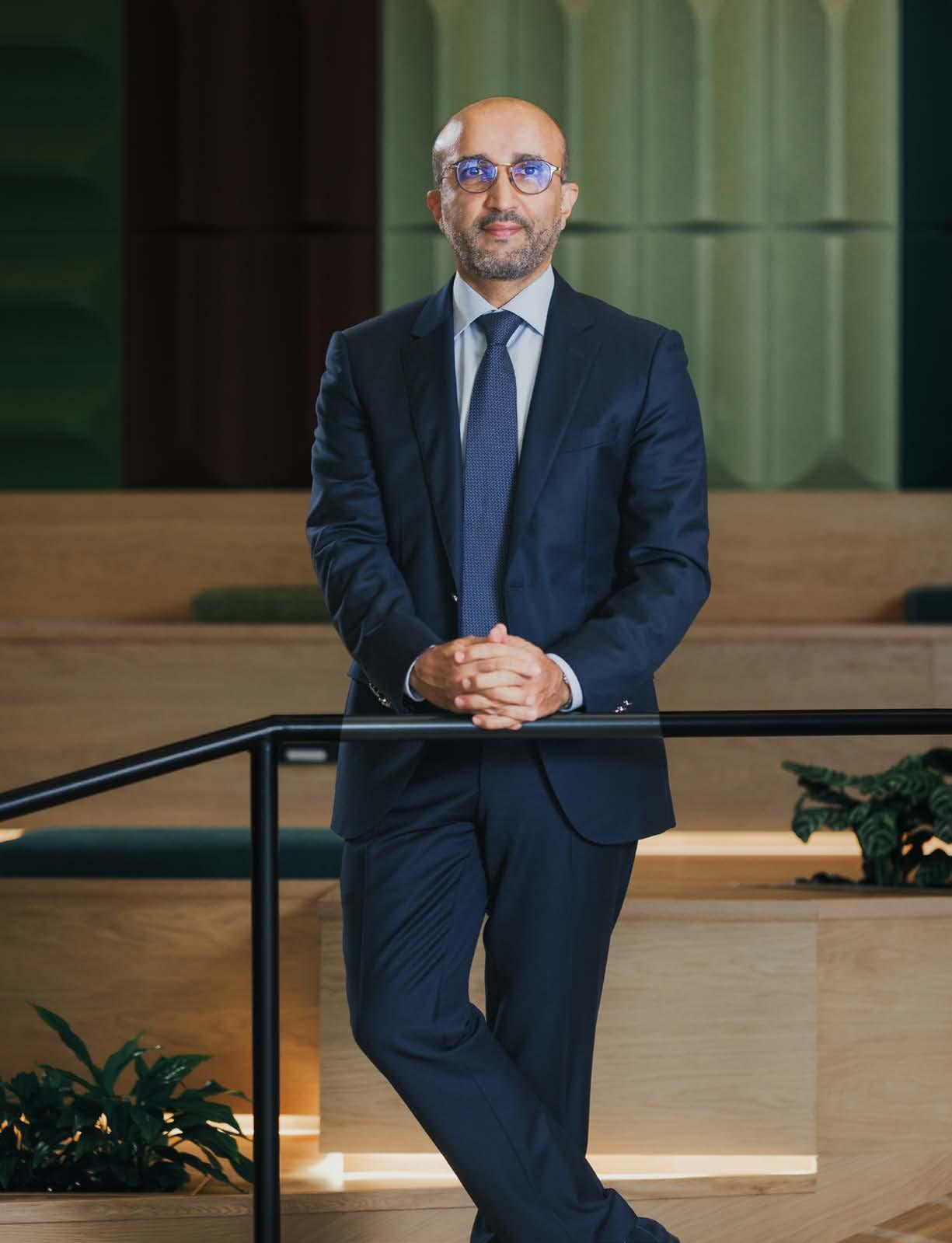
and satellite analytics, and Presight delivers verticalized AI analytics at scale. It is a modular system but also highly integrated. While we support the broader G42 ecosystem, our infrastructure is built for national impact. We serve governments, regulated industries, and enterprises that require performance, control, and trust." said Retmi.
Core42 came to prominence when it officially debuted in October- 2023, during the region's flagship IT and technology symposium, GITEX.
Retmi explained that the sheer demand for digital sovereignty across the UAE, ultimately led G42 to strengthen its cloud & AI business model around this trend, to create Core42 as the main entity within the group to focus on the Sovereign Infrastructure.
“Before Core42, we had G42 Cloud, which was focused on building a sovereign cloud for the UAE. At the time, the emphasis was primarily on private cloud deployments. Today, with Core42, we’ve built a full-stack infrastructure that allows us to serve a much broader range of use cases across the public sector and regulated industries. Whether the need is for private, public, or hybrid models, we deliver sovereign cloud environments aligned to customers’ data classification and security requirements,” said Retmi.
Retmi highlighted how their ability to provide visibility was a key differentiator for
the company in terms of the services that they provide.
"With regards to the Sovereign Public Cloud, we partnered with Microsoft to build sovereign controls on top of Microsoft Azure to provide Sovereign Public Cloud capabilities. This provides a cloud environment that is designed for different types of data from our customers. Open data, sensitive data, and confidential data can go to the public cloud, but they can't go to the standard public cloud, and that's why we built a powerful and secure sovereign controls
company G42 and Microsoft was announced, it was described at the time by many technology commentators and analysts as a landmark collaboration.
Retmi outlined in more detail the nature of the relationship between the two companies and stressed that it wasn't a typical classical tech partnership.
"The partnership with Microsoft is a strategic one that is not only helping two private companies achieve their business goals but is also helping nations to execute their ICT agenda in relation to the features and
The partnership between Microsoft and Core42 is not just a business alliance; together, we are empowering the country to advance its ICT agenda by delivering innovative features and services that directly benefit citizens and enable national progress.”
on top of Microsoft Azure. We leveraged the national policies on data security and data sovereignty, and we have implemented this into our sovereign controls platform “Insight”, which gives customers the visibility on all their infrastructure. They can see if it is inside or outside the country and determine whether they are compliant or not with the policies that are in place. This is what ultimately differentiates the Core42 Sovereign Public Cloud offering versus the solutions provided by the classical hyperscalers," said Retmi.
When the partnership between Core42 parent
services that they provide to their citizens. This is much, much more than any classical partnership. "While Core42 delivers trusted, sovereign infrastructure locally, Microsoft brings the scale and orchestration power of Azure globally. Together, we can meet the full spectrum of sovereignty, from data and operations to the technology stack itself." Microsoft brings its global understanding of security and sovereignty to the table. Core42 provides the missing piece of the puzzle. We are well versed with the local regulation in the UAE, and we have an acute understanding of the
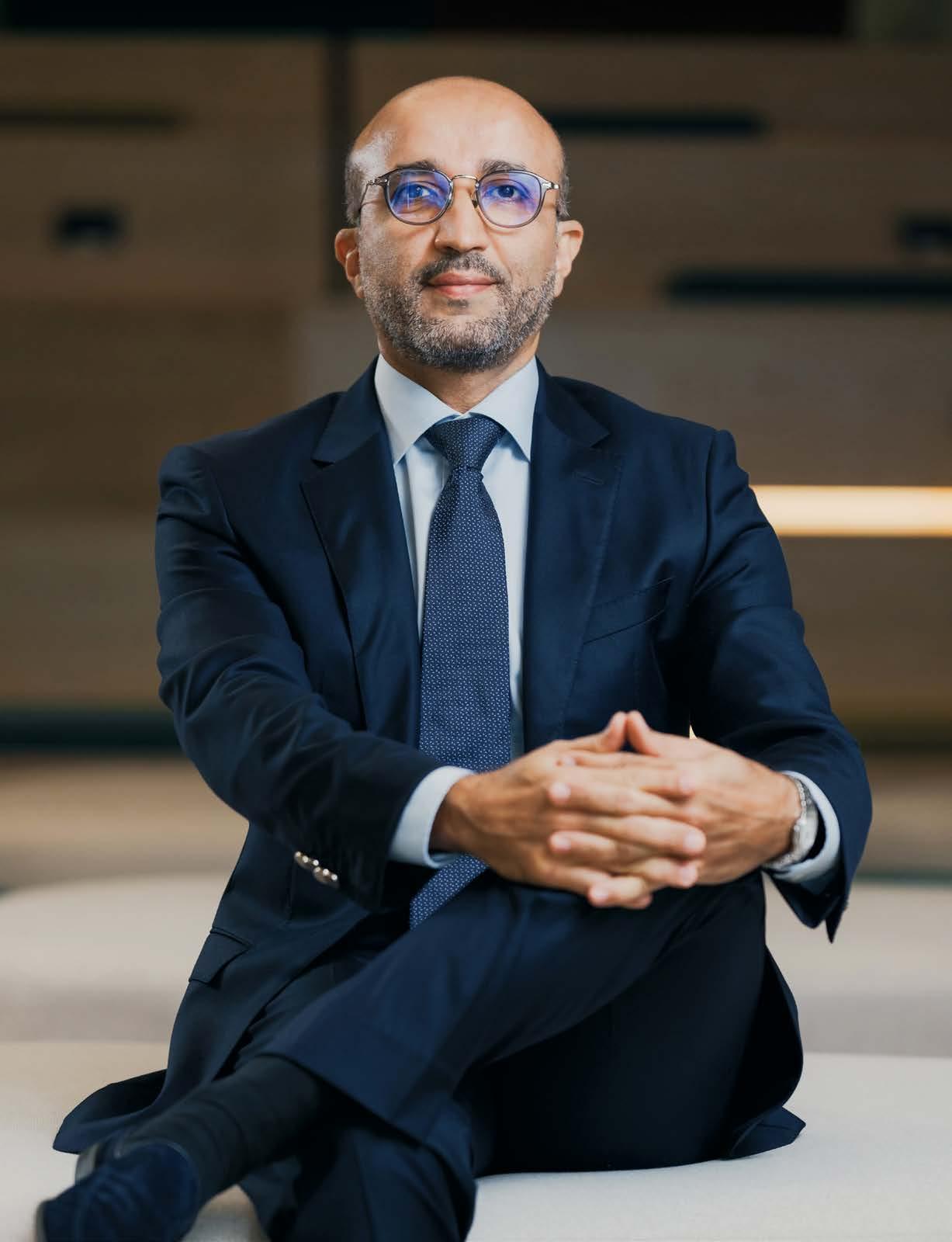
requirements of private and public sector customers in the country. With this we provide an additional layer of trust between the hyperscalers and those regulated industries and the public sector customers that Core42 is bringing," said Retmi.
Core 42 Sovereign Public Cloud is also seen as a tool that can act as a springboard, or a foundation for AI innovation.
Retmi documented the role that Core42 is playing in helping the Department of Government Enablement - Abu Dhabi to become the world's first fully AI-native government by 2027.
"I think it's important for us to acknowledge that we live in a country where AI is adopted everywhere, and mainly by the public sector, which is unique when you compare it to other countries globally. Abu Dhabi's ambition to become the world's first fully native AI government by the end of 2027 is further evidence of the sort of mindset that exists here. We have been working across public sector projects to implement the Core42 Sovereign Public Cloud and our sovereign controls platform, Insight. The primary objective of these initiatives is to better serve citizens and residents by enabling a trusted, sovereign cloud cloud first, and then enabling AI. Through sovereign cloud capabilities, AI infrastructure, and advanced digital transformation services, we are delivering the intelligent foundations for innovation,” said Retmi.
Retmi added that the public sector is demanding far more than traditional cloud services.
“AI moves at extraordinary speed, and we continue to innovate to stay ahead. We recently launched Core42 AI Cloud a high-performance, heterogeneous platform that unites leading accelerators and delivers the flexibility, performance, and compliance our customers need, with sovereign capabilities and global infrastructure to support them at scale,” said Retmi.
When having conversations about the deployment of advanced technologies and
Core42 has helped large customers migrate workloads to the Core42 Sovereign Public Cloud. These projects are focused on ensuring both data residency and true data sovereignty, keeping information within national borders while also preventing external access. Our team assesses workloads, applications, and data requirements to design a compliant and secure solution aligned with local regulatory frameworks. By combining the scalability of Azure with Core42’s sovereign controls, we delivered the governance, policies, and safeguards required for highly regulated
The primary objective is to enable cloud first and then enable AI. Through sovereign cloud capabilities, AI infrastructure, and digital transformation services, we are delivering the intelligent foundations for innovation.”
solutions, and the impact that they can have, there are fewer more effective methods to demonstrate their efficacy than highlighting a specific use-case, or customer success story.
And that's the direction the conversation pivoted towards, as Retmi documented the success of the partnership between Core42 and First Abu Dhabi Bank.
Retmi highlighted the nuanced differences that exist between having data residency versus data sovereignty - and highlighted one of the key requirements from the financial industry was that of data sovereignty.
sectors. This approach is now being extended to financial and government organizations looking to modernize their infrastructure with cloud and AI while maintaining strict sovereignty and compliance standards,” said Retmi.
While Core42 was born in the UAE, its ambitions and operations are increasingly international. The company is now expanding sovereign clusters and AI infrastructure into key hubs in Europe and the United States, creating the unseen foundations that power AI globally.
Retmi concluded a brilliant conversation by discussing how Core42 has plans
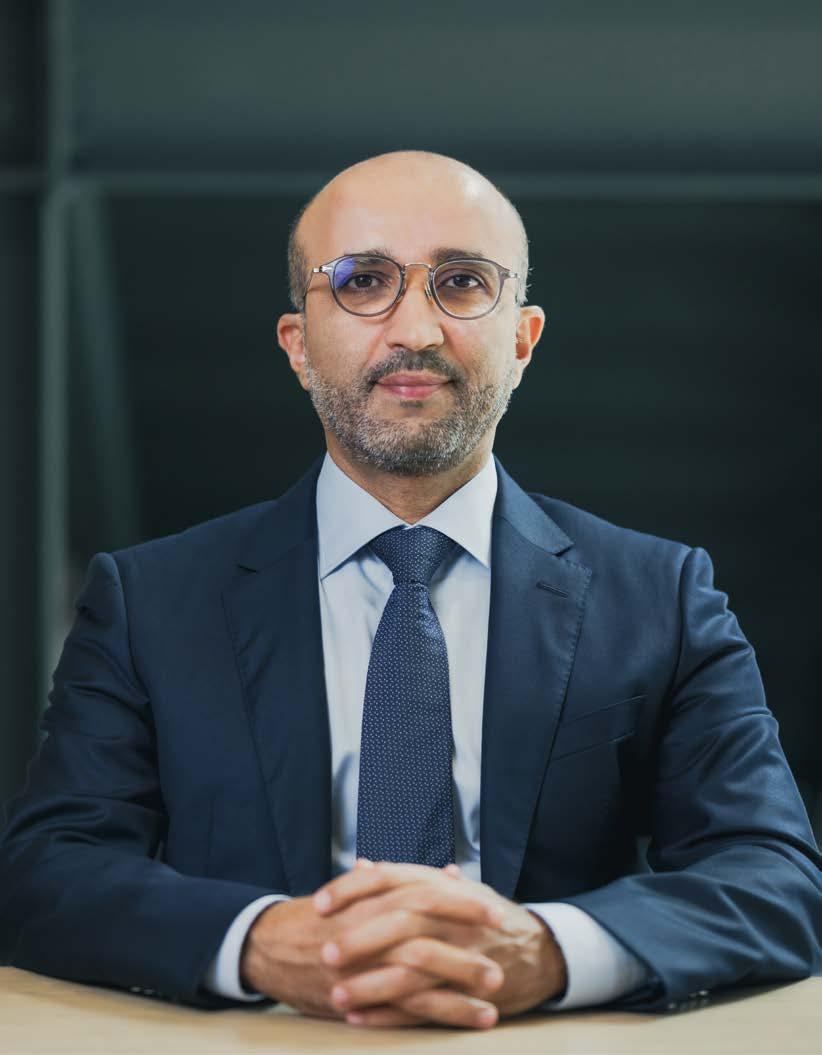
and aspirations to take its blueprint for sovereign cloud and expand it into other marketplaces, but stressed how they led the way with the sovereign public cloud model.
"We have already talked about how lucky we are to be in the UAE; in terms of the leadership and vision the country has. The country wants to be first when it comes to AI innovation; they want all their government services to be fully AI-native. That is the sort of mindset
coming from the top, and that rubs off on the entire tech ecosystem here in the UAE, and we are so lucky to be based in this nation. When it comes to expanding our cloud blueprint, let me give you an example of our Sovereign Public Cloud with Microsoft. What our two organizations have done here in the UAE is important in terms of the trust that we have built around the hyperscaler platform, namely Azure, which is designed to
help the public sector and organizations in regulated industries like finance and healthcare to trust the public cloud and move some of their workloads. As Core42, together with Microsoft, we were the first to offer a complete Sovereign Public Cloud product here in the UAE. In June this year, Microsoft announced a similar offering in Europe, and other brands are following suit as well. This is testament to the vision and leadership of the UAE in being an early adopter of next-generation technology," said Retmi.
Retmi closed by reaffirming that sovereign public cloud remains the cornerstone of Core42’s strategy and its contribution to the broader G42 vision.
“Our blueprint for Sovereign Public Cloud is already proven here in the UAE, where we have enabled some of the most sensitive organizations in government, healthcare, and finance to modernize with trust, compliance, and resilience,” he said. “The partnership with Microsoft has been central to that success, creating a model of how global scale can be combined with local sovereignty. What we are doing here is being noticed internationally, and we are now looking at opportunities to take this sovereign public cloud model to other regions. At the end of the day, cloud is the foundation of AI, and Sovereign Public Cloud is the foundation of digital trust. That is where Core42 continues to play its role.”
CNME Editor Mark Forker spoke to Fissal Oubida , General Manager - Middle East, Africa and India, at Lexar, to learn more about the impact the introduction of ARMOR, the world’s first stainless steel SD Memory Cards is going to have on the marketplace, and how the company has rolled out several innovation to support the growing demand for AI workloads.
AI is driving a new era of growth and innovation. How is Lexar positioning itself to meet the evolving demands of AI-powered systems?
AI being a highly dataintensive field, flash memory plays a critical role in modern AI infrastructure due to its high performance, low latency, reliability, and energy efficiency.
Besides offering faster write/erase speeds and enabling higher storage density in a smaller footprint, flash solutions can easily scale to accommodate evolving data needs without significant disruption.
The centrality of flash in powering AI workflows is driving strong enterprise demand for Lexar’s allflash arrays and solid-state drives (SSDs).
This trend is especially visible in High-
Performance Computing, where the need for flash memory solutions that allow for faster processing and more efficient use of powerful GPUs and CPUs is causing demand to spike for our lineup of compact, high-performance products.
Today, Lexar’s flash drives, SSDs, memory modules, and embedded storage products are at the heart of the AI revolution underway in a variety of sectors, from transportation and healthcare to automotive and energy.
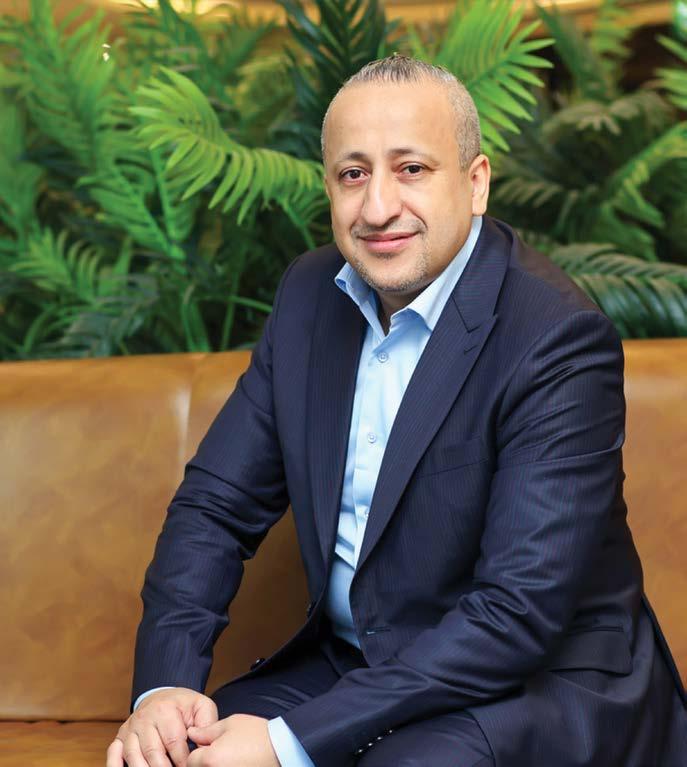

With AI requiring higher performance, lower power consumption, and efficient memory solutions, what breakthroughs has Lexar introduced to address these needs?
Lexar has rolled out several innovations designed to support growing AI workloads and enable enterprises to scale their AI models within an HPC environment.
Notable breakthroughs we have introduced in recent years to help accelerate AI outcomes include our cuttingedge lineup of solid-state drives, which utilize the highspeed PCIe Gen4x4 NVMe interface for significantly faster read and write speeds.
A good example is the the Lexar Professional NM990 PCIe Gen5.0 NVMe M.2 2280 SSD and the Lexar Professional NM1090 PRO PCIe Gen5.0 NVMe M.2 2280 SSD, these two nextgen solid-state drives are engineered for high-end
gamers, professional creators, and AI developers seeking top-tier performance. Both can provide exceptional performance at blazing speeds of up to 14,000MB/s read and 11,000MB/s write—nearly twice as fast as typical Gen 4 SSDs—making it ideal for intensive gaming, rendering, and AI workloads.
With capacities ranging from 1TB to 4TB, a high endurance rating of up to 3000 TBW (4TB), and support for Microsoft DirectStorage, the NM990 ensures faster load times, greater reliability, and enhanced user experience. It also includes the Lexar DiskMaster SSD Management tool for easy drive monitoring
and updates, making it a future-ready solution for performance-driven users. Lexar’s NM990 and Professional NM1090 PRO PCIe Gen 5.0 NVMe SSDs are powerful tools for AI users who need speed, reliability, and efficiency in their workflows.
With blazing-fast read/ write speeds, these drives significantly cut down data loading and model training times—perfect for handling large datasets or running complex AI models.
Both SSDs are built with advanced thermal management and high endurance, ensuring consistent performance during long training sessions or real-time inference. Whether you’re developing AI at scale or deploying models at the edge, these SSDs help keep your work fast, smooth, and future-ready.
For memory storage solutions, we use proprietary, independently developed firmware, and have obtained a number of core technology patents. Our mobile storage products are widely used in security monitoring, industrial control, automotive electronics, medical and other fields.
Likewise, our embedded storage products, with
Lexar’s memory and storage solutions are designed and tested extensively to handle the rigors of AI-driven workloads – including large-scale data processing, model training, and inference tasks.”

multiple core patents and in-house firmware, are specifically designed to meet high-level demands of industrial-grade AI application scenarios, combining highspeed performance with low power consumption to deliver rapid and reliable results.
Can you share how Lexar’s products are specifically designed to support nextgeneration AI applications and workloads?
Lexar’s memory and storage solutions are designed and tested extensively to handle the rigors of AI-driven workloads – including large-scale data processing, model training, and inference tasks – and come equipped with enhanced durability features such as Error Correction Code (ECC)
and thermal management to prevent overheating.
Our SSD lineup delivers significantly increased performance and are deployed in client-level, industriallevel and enterprise-level devices including computers, servers, and data centres.
For deep learning models that require high volumes of data, our advanced NAND technology enables efficient storage and retrieval of large datasets, while minimizing power consumption.
We’re also increasingly catering to the edge AI market
with customizable memory solutions, optimizing our memory cards and storage solutions to ensure quick, lowenergy data processing. Our embedded storage products are deployed across a variety of industries in smartphones, tablets, smart TVs, IoT devices and smart wearables, AR/VR devices, and more.
Lexar is showcasing the world’s lightest, toughest, and fastest suite of memory solutions. What makes these products stand out in such a competitive industry?
We strive to foster a culture of trust and collaboration and, looking ahead, we are committed to continue growing together with our partners as we seek to consolidate our dominance in the region.”
Lexar is bringing a whole lineup of pioneering innovations to Gitex Global 2025, including the world’s first stainless-steel SD memory cards – the ARMOR GOLD and the ARMOR SILVER PRO Cards – which are 37 times stronger than standard SD cards.
Another gamechanger is the Lexar CFexpress 4.0 Series, featuring Type-B DIAMOND, GOLD, SILVER cards and Type-A GOLD cards, delivering unrivalled speed and capacity for 8K video and high-resolution photography. For external storage, we’re showcasing the ARMOR 700 Portable SSD, a highperformance solution built for rugged environments, offering accelerated data transfers and cross-platform compatibility.
Mobile creators will appreciate the super-slim SL500 Portable SSD, which combines high-speed performance with a unique magnetic mounting system; this device features an innovative design that ensures low temperatures even during high-speed operations, guaranteeing uncompromised performance.
Making a star turn at the Lexar stand at Gitex Global is the world lightest portable SSD Professional Go Portable SSD with Hub: winner of the prestigious IDEA Award from the Industrial Designers Society of America, this revolutionary device heralds a new era of portable storage, weighing only 13 grams combining blazing
speeds with an incredible capacity of up to 2TB.
We’re also showcasing a series of products specifically designed for gamers: the ARES RGB 2nd Gen DDR5 Desktop Memory, offering high speeds of up to 8000MT/s and 6000MT/s with a timing of CL26; the PLAY PRO microSD Express Card equipped with PCIe technology for handheld gaming; plus two next-generation internal SSDs: the Lexar Professional NM990 PCIe Gen5.0 NVMe M.2 2280 SSD and the Lexar Professional NM1090 PRO PCIe Gen5.0 NVMe M.2 2280 SSD, engineered for high-end gamers - both can provide exceptional performance of up to 14GB/s read speed and are perfect for gaming and professional rendering.
Lexar’s success has been fueled by its unique go-tomarket strategy, the ‘Lexar Way.’ Could you explain what this means and how it sets you apart from competitors?
‘The Lexar Way’ refers to our innovative delivery method where the company actively works to foster a collaborative ecosystem, empowering partners throughout the region with the necessary resources, tools and support to accelerate product and channel market disruption. Our strategy revolves around education and consumer engagement, ensuring that our partners are well-equipped to meet the evolving demands of clients and market trends.
Recently we achieved a significant milestone in
our expansion strategy, registering a fivefold growth in the number of retail outlets carrying Lexar-branded products across the Middle East, Africa, and India region.
This success owes as much to our unwavering focus on technological innovation as to our dedicated efforts to foster a strong brand-distributor relationship through proactive communication, relevant training sessions, and incentivized campaigns.
If you had to summarize Lexar’s commitment to customers and partners in one message, what would it be? Lexar’s overarching goal throughout its 30-year history of developing industryleading memory and storage solutions has remained the same – to create cutting-edge innovations that transform the daily lives of people. Beyond simply developing and implementing new technologies, our endeavour is to create tangible value for customers by bringing functional innovations that positively affect the way they live, work, and create –forging deep connections and trusted relationships along the way.
These values extend to our approach to partners. Through authentic transparency and open communication, we strive to foster a culture of trust and collaboration and, looking ahead, we are committed to continue growing together with our partners as we seek to consolidate our dominance in the region.
CNME Editor Mark Forker sat down with Francois Van Deventer, Director & CTO, Emerging Markets – Eastern Europe, Turkey, MENA and Africa, at Citrix, and Pierpaolo Taliento, General Manager, at Cloud Software Group, and Thomas Rizkallah, Regional Director – MENA, at Cloud Software Group, to learn how both companies are working together to reimagine the workplace as an experience, the need for a simplified and unified platform in the enterprise space – and the need for governance to act as a seatbelt when it comes to AI.
Citrix was formed in 1989 and was one of the first companies in the world to pioneer remote access.
The company’s mission statement was that people should be able to work from anywhere, and 36 years on that belief is unwavering.
Citrix was acquired in 2022 and is now part of the Cloud Software Group.
And ahead of GITEX Global 2025, CNME were afforded the opportunity to sit down with executive leaders from the Citrix and Cloud Software Group teams to learn more how their technologies are transforming experiences in the workplace.
Francois Van Deventer, Director & CTO, Emerging Markets – Eastern Europe, Turkey, MENA and Africa, at Citrix, has enjoyed a decorated career to date, and is a highly respected technology leader across the

region, that first came to prominence when he was part of the team at Riverbed.
He has spent the last 7 years at Citrix and has been a key figure in its success.
In our work from anywhere world, there is increasing pressure on organisations to deliver seamless employee experiences, but many have struggled to ‘reimagine the workplace’.
Van Deventer stressed the need for businesses to recognise that they need to foster an environment in which employees don’t view work as a location.
“Work today is an experience, not a location.
Citrix enables that experience with Citrix DaaS and Virtual Apps and Desktops, which give employees secure, highperformance access to all their apps and desktops across any device, network, or location. Our partnership with Google Chrome Enterprise Premium ensures that even lightweight endpoints can deliver a full enterprise experience, while the integration of
UNICON strengthens access in education and enterprise use cases. By optimizing performance with analytics and adaptive technologies, Citrix helps organizations not only deliver flexible work but also improve employee engagement and retention — turning the digital workspace into a competitive advantage,” said Van Deventer.
Work today is an experience, not a location. Citrix enables that experience with Citrix DaaS and Virtual Apps and Desktops, which give employees secure, high-performance access to all their apps and desktops across any device, network, or location.”
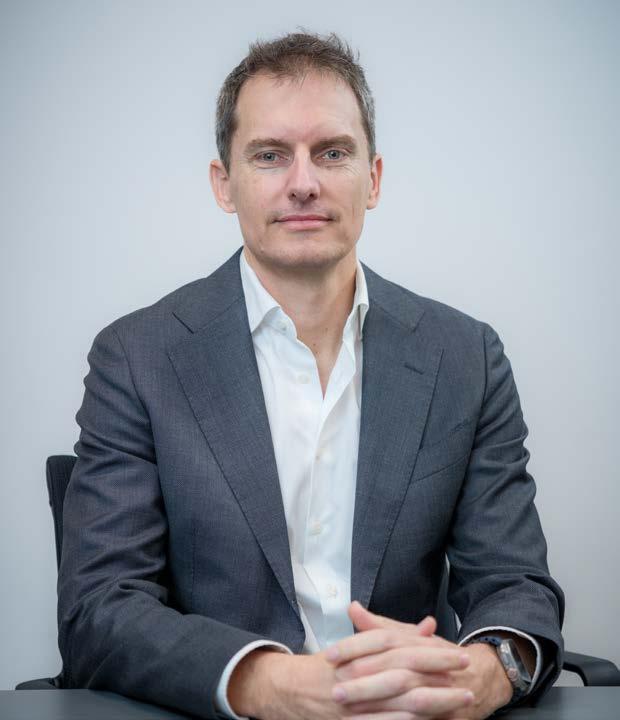
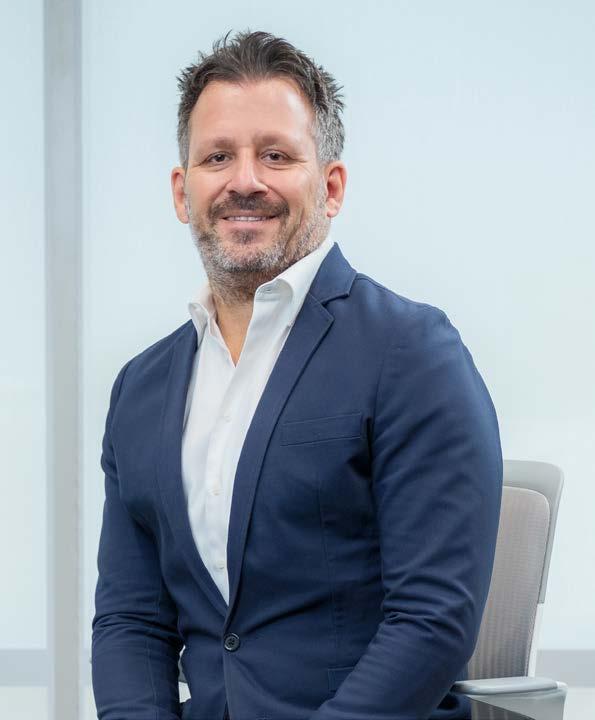
Van Deventer highlighted the importance of security, compliance, and governance when it comes to delivering seamless collaboration.
“Collaboration is only effective if it’s secure. Citrix delivers this balance by combining Zero Trust access through Citrix Secure Private Access with the delivery of apps and desktops via Citrix DaaS and Virtual Apps and Desktops. The acquisition of deviceTRUST enhances contextual security, dynamically adapting access based on device posture and risk. NetScaler adds advanced security for applications, while our acquisition of Strong Network extends these protections into developer environments, ensuring code and data remain secure. With built-in support for governance frameworks like GDPR, HIPAA, and ISO standards, Citrix enables enterprises to collaborate confidently across SaaS, VDI, and cloud apps, ensuring productivity never comes at the cost of compliance,” said Van Deventer.
One of the biggest challenges for enterprises has been the integration of disruptive technologies into their existing processes and systems.
Many tech companies come with the promise of ‘removing complexity’ in the transition towards a unified digital workspace, but they don’t always deliver on their claims.
However, Van Deventer explains how Citrix can simplify the complexities that exist.
“Enterprises face rising complexity from SaaS, cloud, and legacy apps. Citrix simplifies this with a single platform that delivers and secures workspaces across any environment. Citrix DaaS and Virtual Apps and Desktops abstract infrastructure complexity, while NetScaler ensures reliable, secure app delivery. Secure Private Access and deviceTRUST add adaptive access controls, and Strong Network extends governance into developer workspaces. By consolidating management, applying consistent policies, and leveraging analytics to automate security and performance, Citrix reduces operational costs while giving IT teams the confidence to support business growth without added risk,” said Van Deventer.
CNME Editor Mark Forker then spoke to Thomas Rizkallah, Regional Director – MENA, at Cloud Software Group.
He has an impressive credentials, and has worked with companies such as McAfee, Microsoft and HPE, before joining Cloud Software Group in 2019.
Rizkallah is a hugely respected and seasoned IT sales professional, and he began our conversation by outlining how Citrix was evolving to support the future
of work in an increasingly hybrid and remote-first world.
“We’re evolving by focusing on delivering a unified platform that centres on a cohesive user experience.
The Citrix platform ensures that the unified workspace and uture of work is platform, device and location agnostic. Simply, this allows organizations to future-proof their strategy and reduce operational complexity by enabling employees, to work on any device form factor, operating system and from any location, serviced through an on-premise, or cloud infrastructure,” said Rizkallah.
When pressed on what role he sees Citrix playing when it comes to bridging the gap between flexibility and enterprise-grade security, he declared that Citrix would adopt a very ‘data centric’ approach.
“We continue to ensure that we take a data centric approach by managing and securing data, at the data centre, rather than on the device. Contextual access and profile-based security access ensures that enterprises benefit from a consistent security posture, irrespective off the device, platform or application. We further bridge the gap by upholding zero-trust
Collaboration is only effective if it’s secure. The acquisition of deviceTRUST enhances contextual security, dynamically adapting access based on device posture and risk.”
principles by ensuring users are continuously verified for access rather than focusing on the initial login process. Our platform also leverages adaptive security allowing us to monitor and trigger policies in real time based on user identity, location and device type. This serves both the internal user or external users such as contractor access,” said Rizkallah.
The conversation then shifted towards market differentiators, and Rizkallah explained what makes Citrix stand out from the rest of the crowd.
One of the primary factors was the autonomy, choice and flexibility that Citrix provides for its customers.
“Our strategy is focused on ensuring customers have choice that moves them away from the lock-in technology scenarios they tend to experience with our competitors. We have built and engineered our solutions to ensure there is robust integration access and licensing flexibility through our platform with almost every technology partner and cloud provider available today. We have invested and built alliances with Microsoft, Google, Amazon, Apple, Oracle and many others to ensure enterprises have a modular, scalable and cost-effective model when they depend and rely on Citrix at the centre of this,” said Rizkallah
He concluded by adding that Citrix delivers highly
flexible subscription licensing models through solutions that simplified the enterprise journey by managing, securing and observing everything at the end point, perimeter, gateway, and data centre.
The final segment of this 3-part series of interviews conducted by CNME Editor Mark Forker was with Pierpaolo Taliento, General Manager of Cloud Software Group.
Our conversation was focused primarily on the burning topic of AI.
There is no doubt that AI is the future, and we are already witnessing firsthand how it is
every intern read the CEO’s emails; don’t let AI agent either,” said Taliento.
When asked what role governance plays in controlling how AI interacts with enterprise data in the digital workspace, Taliento said that governance had to be the seatbelt.
“Governance is critical. It doesn’t make the car faster, but it stops you from flying through the windshield. Policies, permissions, and audit trails make sure AI doesn’t turn into a liability disguised as innovation. Without governance, digital workspaces can become the digital Wild West,” said
Policies, permissions, and audit trails make sure AI doesn’t turn into a liability disguised as innovation. Without governance, digital workspaces can become the digital Wild West.”
transforming industries on a global scale.
However, we are also acutely aware of the fact that the technology needs guardrails.
Taliento said it was imperative that businesses don’t let AI run wild.
Organisations can harness the power of AI to drive productivity, and they can do that without compromising sensitive data, that can remain intact, quite simply by refusing to let AI run wild. Productivity comes from giving AI access to the right data, not all data. Guardrails, segmentation, and zero-trust aren’t bureaucracy, they’re oxygen masks. You don’t let
Taliento.
Taliento concluded what was a terrific overall conversation by shining light on how Citrix’s ‘Secure the Work’ approach helps balance AI-driven efficiency with the need for privacy, compliance, and cyber resilience.
“Citrix doesn’t chase AI hype; it fences it. “Secure the Work” means the AI can see what it needs, do what it should, and nothing more. Privacy is baked in, compliance isn’t an afterthought, and resilience isn’t optional. Think of it as AI on a leash long enough to run fast, short enough to never cross the line,” said Taliento.
EDGE Group
CNME Editor Mark Forker spoke to Dr. Majeda Al Marzooqi, Director of IT Service Delivery & Operations at EDGE Group, who spoke candidly about her illustrious career to date, and she reiterated the need for women entering the technology industry to be brave, bold and always trust their vision.
Can you give me an overview on your career in IT and technology, and document what some of your career highlights have been?
I have been privileged to build a career in the IT and technology sector that spans about two decades, a journey that began with a genuine passion for problem-solving and innovation.
Over the years, I have worked across diverse areas of IT, from infrastructure and enterprise applications to digital transformation and cybersecurity, which has provided me with a holistic understanding of how technology enables organizations to thrive.
Some of my career highlights include leading complex transformation programs that reshaped the way organizations operate, building high-performing IT teams that deliver with excellence, and introducing governance and operational models that elevated efficiency and transparency.
Most recently, at EDGE Group, I have overseen the establishment of an integrated IT Service Delivery & Operations function that has centralized, modernized, and optimized services across multiple entities.
I am also proud of being recognized with prestigious awards, such as Government IT Leader of the Year, Young IT Professional of the Year, and Digital Transformation Achievement, which not only honour my efforts but also reflect the dedication and professionalism of the teams I have led.
Each milestone in my career has reinforced my belief that technology, when combined with the right leadership and vision, is one of the most powerful enablers of organizational success.
You are currently working as the Director of IT Service Delivery & Operations at EDGE Group, but can you outline to our readers what your day-to-day role entails, and what are your key objectives in the job?
As the Director of IT Service Delivery & Operations, my role is centered on ensuring that technology becomes a seamless enabler for business excellence.
On a day-to-day basis, I oversee the performance, reliability, and innovation of IT services across EDGE Group, which includes infrastructure, applications, architecture, information security operations, technical support, and IT projects.
My key objectives revolve around three pillars: operational excellence, digital enablement, and continuous innovation.
Operational excellence means ensuring that our IT services are resilient, secure, and cost-effective, delivering maximum value to the business. Digital enablement is about aligning IT with business strategy, making sure that technology initiatives directly support the Group’s mission of growth and innovation.
Finally, continuous innovation ensures we are not just keeping pace with technology but shaping the future, whether through AI
Encouraging more women into STEM fields requires a multi-faceted approach that starts with education and extends all the way into the workplace.”

adoption, automation, or enhanced user experiences.
At EDGE Group, I also place great emphasis on transparency and accountability. We have developed IT management dashboards that provide real-time insights into our IT portfolio, financials, human resources, and many other important statistics creating a culture of data-driven decision-making.
My role is not just about managing technology, it is about empowering people, driving collaboration, and
ensuring that IT is recognized as a strategic partner within the organization.
We know that traditionally the IT and technology industry has been a maledominated sector, and whilst strides have been made, there is still a gap. As a female IT leader that has enjoyed a great career to date, you serve as an inspiration to others who may want to follow in your lead. However, what do you think needs to be done to encourage more women to enter STEM-related fields?
Encouraging more women into STEM fields requires a multi-faceted approach that starts with education and extends all the way into the workplace.
First, we need to inspire young girls at an early age by showcasing role models who reflect what is possible, and by breaking stereotypes that suggest technology is not for them.
Exposure to coding, robotics, and problem-solving activities in schools can ignite passion and confidence from an early stage.
At the organizational level, companies must create inclusive cultures where women feel supported, valued, and empowered to grow.
This includes mentorship programs, leadership training, and clear career development pathways. Representation matters; when women see other women succeeding in leadership positions, they feel it is possible for themselves too.
We must also change the narrative around what it means to work in technology. IT is not just about coding or systems, it is about creativity, innovation, critical thinking, and impact. Women bring diverse perspectives and leadership styles that drive better outcomes for organizations.
By celebrating those contributions and providing equal opportunities, we can close the gender gap in STEM and build stronger, more inclusive industries for the future.
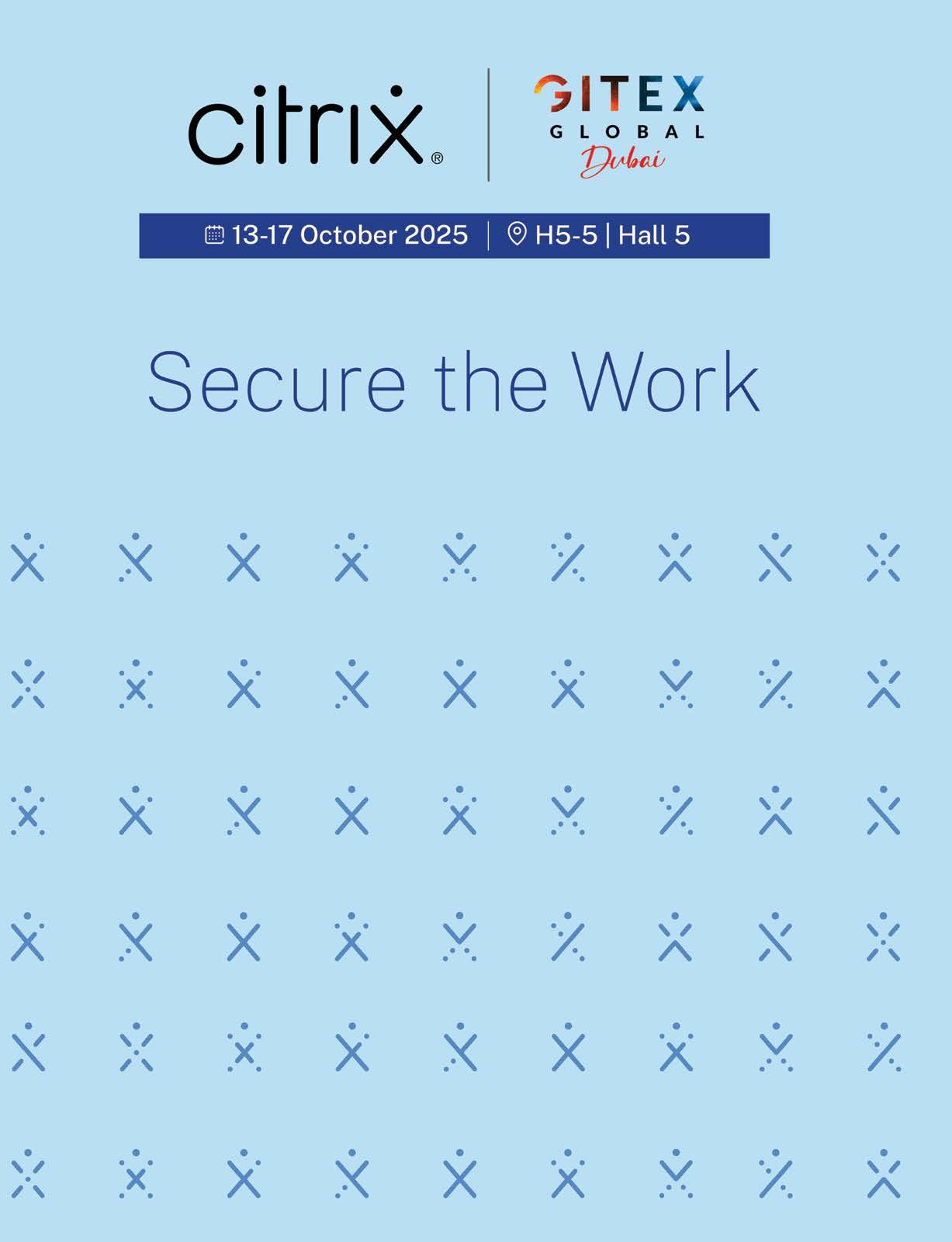
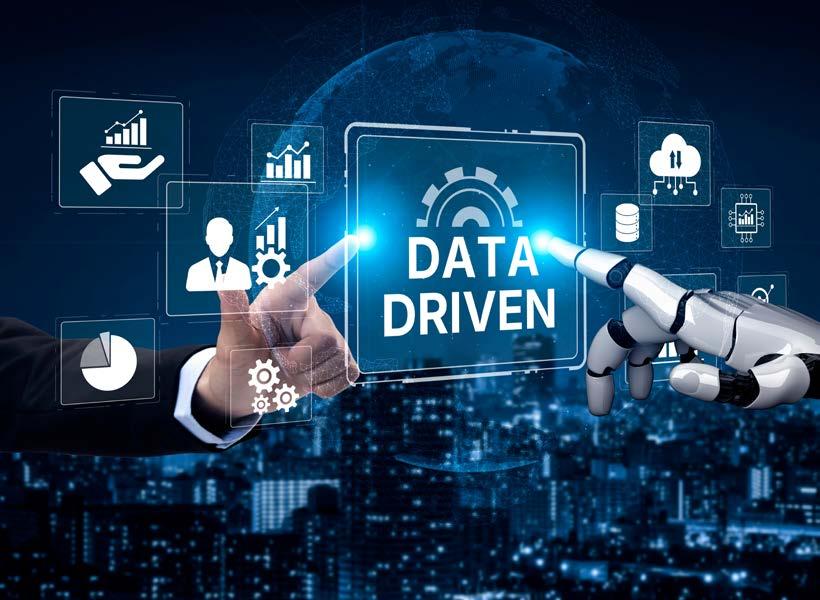
You’ve spent 17 years in the IT and tech industry, but if you were to go back-in-time, what advice would you give your younger self?
If I could go back in time, I would tell my younger self three key things: be bold, be resilient, and trust your vision.
In technology, change is constant, and it is easy to feel overwhelmed by the pace of innovation or the challenges that arise. I would remind myself that setbacks are not failures but stepping stones to growth.
Every challenge I have faced in my career, from managing complex transformations to overcoming doubts in a maledominated industry, has shaped me into a stronger leader.
I would also tell myself to always embrace lifelong learning. Technology evolves rapidly, and staying ahead requires curiosity and commitment to continuous development.
Finally, I would say: never underestimate the power of your voice and your leadership. It is not about fitting into existing moulds, it is about reshaping them and paving the way for others to follow.
A negative trope that is often used against women in leadership roles is that they have empathy, and that is seen by some as a weakness. However, why do you think women make great leaders, and can you tell us about your own leadership style?
I strongly believe that empathy is not a weakness, it is one of the greatest strengths of effective leadership.
Empathy allows leaders to connect with their teams,
understand challenges at a deeper level, and inspire people to deliver their best. In today’s complex business environment, where collaboration and innovation are essential, leadership without empathy is incomplete.
Women make great leaders because they bring balance by combining strategic vision with human understanding, and resilience with adaptability. They are often natural collaborators who value inclusivity and diverse perspectives, which results in stronger and more innovative outcomes.
My own leadership style is built on transparency, accountability, and empowerment. I believe in creating a culture where individuals feel trusted, supported, and motivated to excel.
I encourage open communication and make sure my team always understands not just what we are doing but why. At the same time, I maintain a results-oriented mindset, ensuring that our IT strategies and operations align with the business’s broader objectives.
Ultimately, I view leadership as a responsibility to serve, empowering others, enabling success, and leaving behind a legacy of growth and innovation.
Women make great leaders because they bring balance by combining strategic vision with human understanding, and resilience with adaptability.”
Zoom Communications
CNME Editor Mark Forker spoke to Mohannad AlKalash, Vice President, Middle East, Turkey, Africa and Pakistan at Zoom Communications, during Zoomtopia in London, in an effort to find out what about the latest iteration of its AI Companion, the role Agentic AI is going to play in transforming the contact centre space – and the importance of nurturing local talent as they continue to expand their footprint across the Middle East region.
Zoom recently introduced AI Companion 3.0. What differentiates this version from earlier iterations, and how do you see it reshaping workplace collaboration?
AI Companion 3.0 represents a major leap forward from earlier iterations because it moves from simply assisting meetings to orchestrating the entire workflow. Earlier versions focused on notetaking, summaries, and generating content within a single interaction. With 3.0, the intelligence becomes more proactive, context-aware, and integrated across the full Zoom platform from meetings and chat to phone, whiteboard, and Contact Center.
The real differentiator is its ability to act as an agentic AI that not only captures what’s happening, but helps drive outcomes whether that’s creating follow-up actions, generating project briefs, or even connecting across applications to help teams move from ‘conversation to completion.’
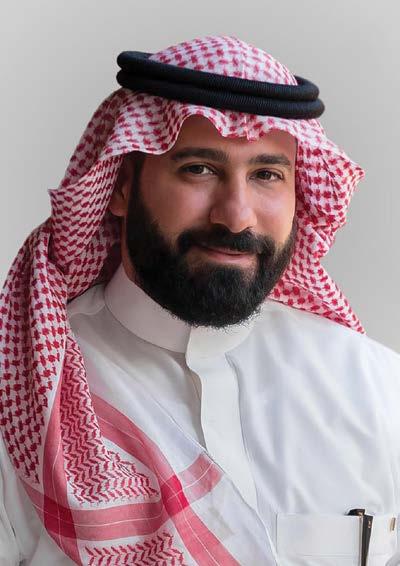
In terms of reshaping workplace collaboration, I believe AI Companion 3.0 is closing the gap between communication and execution. Teams in our region and globally will be able to collaborate faster, reduce time spent on
manual tasks, and unlock new levels of productivity, while maintaining the human connections that make collaboration meaningful
Many organizations worry about productivity tools adding complexity rather than reducing it. How does AI Companion 3.0 ensure simplicity and real value for end-users?
That’s a very important point, because technology only delivers value if it’s simple and intuitive. With AI Companion 3.0, we designed it to be embedded natively across the Zoom platform — there’s no separate app to learn, no extra logins, and no additional cost. It simply shows up where users are already working: in their meetings, chats, whiteboards, or contact center interactions. The second element is context. Instead of overwhelming users with generic outputs, AI Companion 3.0 is contextaware it understands the
conversation, the project, and the workflow, and provides only what’s relevant at that moment. This combination of frictionless integration and highly contextual assistance ensures that teams don’t feel burdened, but rather empowered to get real work done faster and smarter
What more can global players like Zoom do to nurture local skills and prevent a reliance solely on imported expertise?
For us at Zoom, nurturing local skills is not just a social responsibility it’s a strategic imperative. The region’s digital transformation will only be sustainable if it is powered by local talent. That’s why we are investing in training programs, knowledge-transfer initiatives, and partnerships with universities and innovation hubs to empower young professionals with the skills needed for the AI era. We are also expanding our regional leadership and
technical teams, ensuring that decisions and expertise are rooted locally, not just imported. By combining global best practices with local talent, we aim to create an ecosystem where innovation thrives in the region, for the region. This is how global players like Zoom can play a meaningful role in reducing dependency and unlocking long-term economic and social value.
The contact center is often the first touchpoint between businesses and their customers. How can Agentic AI fundamentally change that experience?
You’re absolutely right the contact center is the front door of any business, and it shapes how customers perceive the
In terms of reshaping workplace collaboration, I believe AI Companion 3.0 is closing the gap between communication and execution.”

brand. With Agentic AI, we are moving from reactive service to truly intelligent engagement.
Instead of simply answering questions, AI can now understand intent, predict needs, and take proactive actions whether that’s resolving an issue endto-end, escalating to the right human agent, or even recommending the next best step before the customer asks.
The real transformation is in combining efficiency with empathy. Agentic AI reduces wait times and repetitive tasks, while freeing human agents to focus on complex, high-value interactions. This doesn’t just improve metrics like resolution time or customer satisfaction it redefines the entire customer journey into something faster, smarter, and more personal
How do you see the balance evolving between human agents and AI agents in delivering empathetic, efficient customer service?
I don’t see it as a question of humans versus AI it’s about creating the right balance where each plays to its strengths. AI agents are excellent at handling high-volume, repetitive, and transactional tasks with speed and accuracy.
Human agents, on the other hand, bring empathy, cultural understanding, and the ability to navigate nuance in ways that technology alone cannot.
The future is a hybrid model: AI working in the background to provide instant answers, guide workflows, and prepare
context, while human agents step in for the moments that require judgment, reassurance, or complex problem-solving. This balance ensures that customer service becomes both more efficient and more human giving customers the best of both worlds.
You were appointed in May 2024, can you reflect on your own personal journey at Zoom, and what your primary goals and objectives are over the next 12-24 months for the company across the Gulf region?
When I joined Zoom in April 2024, my vision was clear: to build on Zoom’s global strengths while deeply localizing our presence across the Gulf. Over the past year, I’ve had the privilege of leading a talented team and engaging directly with governments, enterprises, and partners who are driving some of the world’s most ambitious digital transformation agendas.
Personally, it has been an exciting journey of learning, building trust, and demonstrating that Zoom is here not just as a technology provider, but as a long-term strategic partner.
Looking ahead, our objectives for the next 12–24 months are centered on three pillars. First, strengthening our infrastructure with local data centers and compliance frameworks that align with national priorities.
Second, expanding our ecosystem of partners and developers ensuring that Zoom is integrated into the platforms and industries that
matter most, from finance and energy to healthcare and education. And third, investing in local talent and AI-driven innovation to support governments and businesses in achieving their digital economy goals.
For me, success means that when organizations across the Gulf think of collaboration, customer engagement, or AI-powered transformation, Zoom is at the center of that conversation helping them move from communication to real impact.
More and more companies are mandating their employees to return to the office 5 days a week. AWS are a high profile example of this in the tech sector. JP Morgan in banking. Why has this happened, is this a reflection that hybrid work was no longer working, or was it more in relation to an erosion of trust?
I think it’s important to recognize that hybrid work has not failed in fact, it has proven its value across industries. What we are seeing with some organizations mandating a full return to office is less about the model itself and more about leadership preference, cultural dynamics, or specific business needs. For some sectors like banking, where regulatory oversight and apprenticeshipstyle learning are critical,
leaders may feel that physical presence is necessary. For others, like certain parts of tech, it can stem from concerns around culture, engagement, or productivity.
But the data consistently shows that when hybrid is done right with the right tools, clear expectations, and a focus on outcomes rather than hours it boosts both productivity and employee satisfaction. I don’t see this as an erosion of trust, but rather a reminder that trust must be earned and maintained through transparency, accountability, and strong leadership. At Zoom, we believe the future is not binary not office versus remote but flexible models that give organizations the ability to adapt while empowering employees to do their best work.
My last message is simple: the future of work and customer engagement will be defined by flexibility, trust, and innovation. At Zoom, we are committed to being more than a platform we are a partner for governments, businesses, and communities across the Gulf and beyond. Together, we can harness technology, AI, and local talent to unlock new opportunities and create real impact for the region. The journey is just beginning, and Zoom is here to help shape it.
The real transformation is in combining efficiency with empathy. Agentic AI reduces wait times and repetitive tasks, while freeing human agents to focus on complex, high-value interactions.”
13th OCTOBER 2025

Palace Downtown, Dubai 6:00 PM onwards
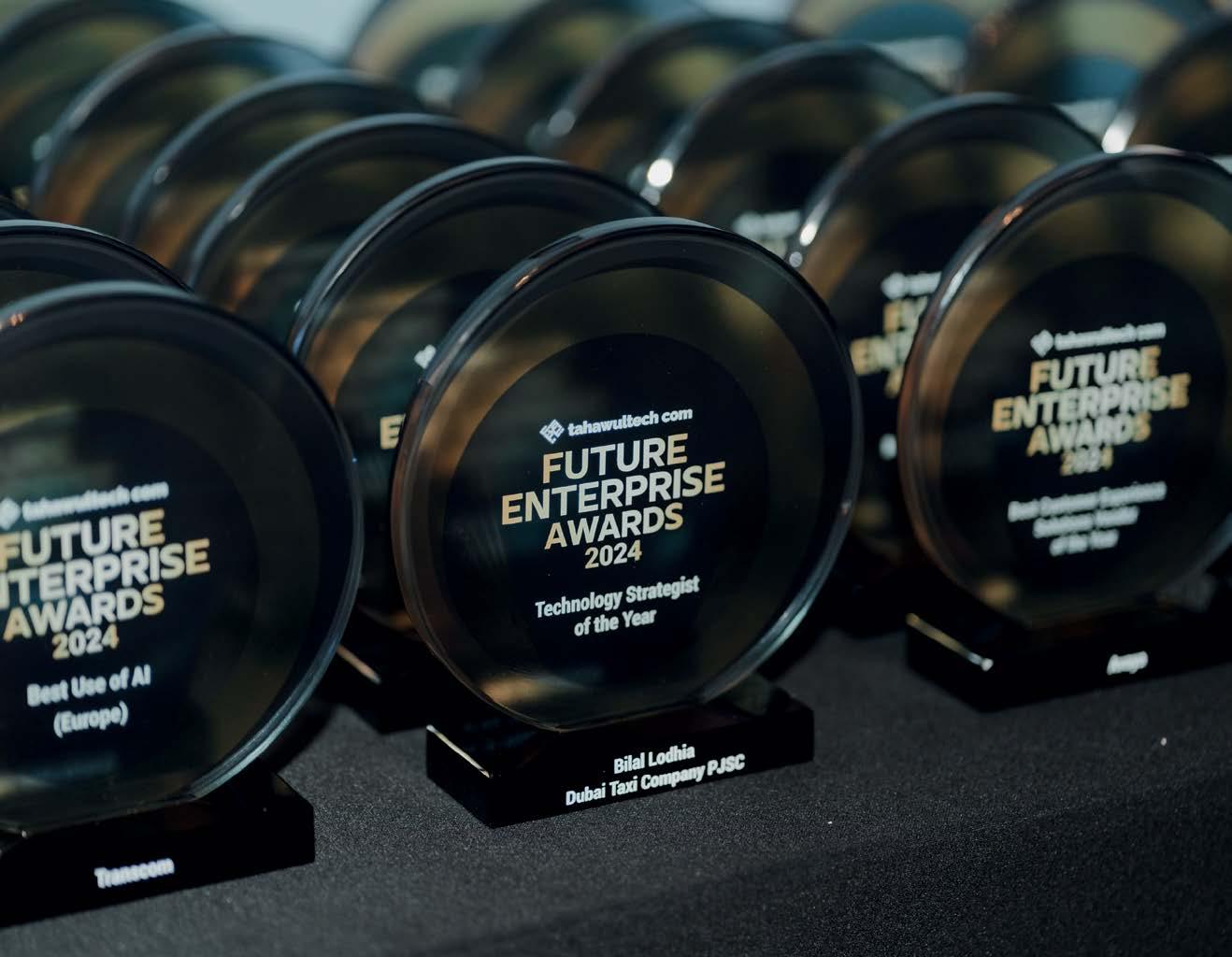
The Future Enterprise Awards, hosted by CPI Media Group and tahawultech.com is one of the most iconic technology events in the IT industry across the Middle East region.
The fact that the Future Enterprise Awards are so iconic is primarily due to their incredible longevity, this year’s edition will mark the 20th edition of the coveted technology awards.
One other indelible factor in the historic success of the Future Enterprise Awards is the fact that the event is always held on Day 1 of GITEX Global.
As the digital landscape continues to evolve at incredible speed, recognizing and celebrating innovation is more important than ever.
The Future Enterprise Awards 2025 will pay tribute to the fearless leaders, visionaries and companies that are championing change through cutting-edge technologies that are completely reshaping and transforming the digital future we live in.
Barco
As hybrid work continues to reshape how organisations connect a nd collaborate, Barco is once again setting new benchmarks in meeting room innovation. Ahead of GITEX Global 2025, CNME Editor Mark Forker sat down with Mr. Dhiraj Patil, Territory Manager - Meeting Experience at Barco, to discuss the debut of ClickShare Hub in the MEA region and how Barco’s award-winning ClickShare Conference portfolio continues to evolve for the modern workplace.
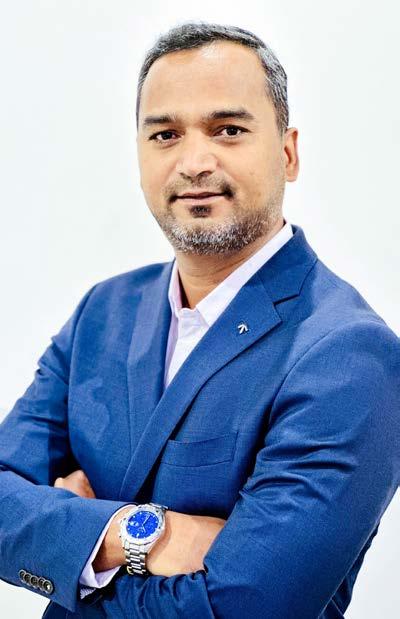
ClickShare Hub has been positioned as the “central intelligence” of the meeting room. How does this innovation redefine the way enterprises think about collaboration across different meeting spaces?
With ClickShare Hub, we’re reimagining how organisations
approach collaboration across all meeting spaces.
ClickShare Hub is a modular wireless video conferencing room system for effortless hybrid meetings that enables AI-assisted meeting experiences and adds intelligent productivity to the meeting room.
It’s designed to be the central intelligence that connects people into one seamless experience. Enterprises can now standardise the meeting experience across their entire workspace.
The Hub combines the simplicity users love about ClickShare with the security, scalability, and manageability IT teams expect. In short, it helps companies create a more inclusive, intuitive, and connected meeting culture.
Hybrid collaboration is often challenged by inconsistent user experiences across platforms and devices. How does Barco ensure interoperability and meeting equity through ClickShare Hub and ClickShare Conference?
That’s a great question — and it’s exactly where Barco stands out. Interoperability has always been a cornerstone of our approach.
ClickShare Conference range is completely platform-agnostic. Whether it’s Microsoft Teams, Zoom, Google Meet, or Webex — users can walk into a room, click, and collaborate instantly.
The Hub takes this even further by creating a unified ecosystem that brings consistency and smooth user experiences to every meeting.
Combined with our alliance partners like Sennheiser and Logitech, we ensure that every participant — in-room or remote — experiences crystal-clear audio, video, and content sharing. When everyone in the hybrid meeting enjoys equal opportunity to communicate, contribute, and share ideas during a hybrid meeting, regardless of their location, we talk about meeting equity.
Security and manageability are top concerns for IT leaders. How do enterprisegrade features like ISO 27001 certification and XMS Cloud management set ClickShare apart in the market?
Security and manageability are truly non-negotiable for enterprises today, and Barco takes that very seriously.
ClickShare is ISO 27001 certified. ISO 27001 is the cornerstone of information security management. It provides a framework for establishing, implementing, maintaining, and continually improving an Information Security Management System. Compliance with this standard demonstrates that a company has identified its security risks and put in place preventative measures to manage or reduce them. It’s a clear signal to stakeholders that the organisation takes information security seriously.
ClickShare’s XMS Cloud
management platform gives IT teams complete visibility and control — from remote device monitoring and firmware updates to datadriven insights about room usage and adoption.
It’s about giving IT the confidence that their collaboration network is both secure and optimised, while end users enjoy a frictionless, one-click experience.
As BYOD has become commonplace, how does ClickShare Conference empower employees to use their preferred UC&C platform while still leveraging enterprise-grade AV infrastructure?
With ClickShare Hub, we’re reimagining how organisations approach collaboration across all meeting spaces.”

BYOD has really changed how people expect to collaborate — flexibility is key. Employees want to use their own devices and preferred meeting platforms, but they also want the quality that comes with professional in-room AV. ClickShare Conference bridges that beautifully.
With one click, users can wirelessly connect their laptop to the room’s camera, microphone, and speakers — no cables, no adapters, no hassle. It brings enterprisegrade meeting quality to any platform of choice, helping employees feel empowered and IT teams stay happy with a standardised, secure setup.
Looking ahead, as hybrid work continues to evolve, how is Barco ensuring that ClickShare remains futureready and adaptable to the changing needs of enterprises worldwide?
At Barco, we believe collaboration technology should evolve with the way people work. Hybrid work is still maturing, and so are the needs of our customers — which is why ClickShare is designed with flexibility and future-readiness in mind.
The new ClickShare Hub is a perfect example. It’s built on a scalable platform that can adapt through software upgrades, new UC&C integrations, and advanced analytics.
We’re not just keeping pace with hybrid work — we’re helping shape what’s next for smarter, more connected meeting experiences.
CNME Editor Mark Forker spoke to Dr. Abdulla Al Nuaimi Founder and CEO, at NX Digital Technology, to learn more about how his company is helping government entities to reclaim AI sovereignty by taking ownership of their intelligence stack.
Dr. Abdulla Al Nuaimi is a hugely respected figure across the IT ecosystem across the Middle East. In 2015, he decided to establish NX (NX Digital Technology) and in the 10 years that have elapsed the company has gone from strengthto-strength under the leadership and tutelage of Al Nuaimi.
NX is 100% Emirati-owned, and part of its mission statement is to foster a thriving start-up culture, and is know for providing innovation, modern and aesthetic solutions in AI, cybersecurity and Digital Transformation.
Ahead of GITEX Global 2025, Al Nuaimi sat down with CNME Editor Mark Forker to give a broader overview of the NX business model, and the role it plays in helping government entities across the UAE.
NX is UAE based Technology company and a startup culture, providing innovative, modern and aesthetic solutions in AI, Cyber security, Digital Transformation.
What made you focus on onpremises and Edge AI for government applications?
Governments want the power of GenAI but not the dependency that comes with public clouds. When national data, security
intelligence, or citizen records are involved, you can’t just push it to some remote data center.
On-prem or edge AI gives full control: data, models, and inference all stay within the country’s borders.
It’s not only about privacy Its about AI sovereignty, owning your intelligence stack just like you own your defense system.
How is this different from traditional cloud AI deployments?
Cloud AI is amazing for startups, but governments live in a high-risk zone. Your data and model weights often sit on someone else’s infrastructure and that’s not always acceptable.
With on-prem or edge GenAI, you are running your own models on secure clusters. No data leaves your perimeter, and every inference is traceable. It’s like shifting from renting
intelligence to owning your national brain.
Is on-prem GenAI practical? Doesn’t it demand huge compute power?
It did once, but not anymore. Today we have optimized and quantified models that run brilliantly on NVIDIA A100s, H100s, or even Jetson devices. You can host strong AI assistants, summarizers, or translation systems completely offline.
Once you own the infrastructure, cost per token plummets and performance stays consistent. You are literally building your own AI utility grid.
Which government functions can benefit the most?
Public Security & Transport: Edge AI that analyses live feeds, translates, and acts in real time. Citizen Services: Local LLMs answering citizens in Arabic or other regional languages no cloud APIs.
NX helps governments move from using AI to owning AI — responsibly, securely, and with full control over their digital future.”
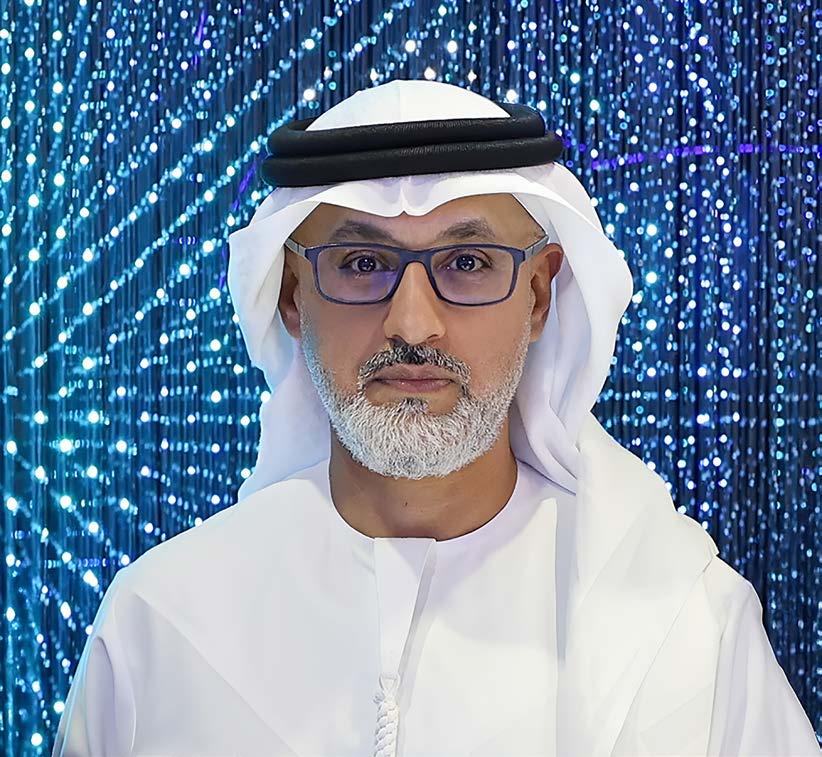
Healthcare, Police, and Defense: Keeping sensitive data sealed within their own environment. Even simple document summarization or regulation-aware chatbots can be done internally, with zero exposure.
How does this tie into national digital transformation?
Digital transformation modernized infrastructure. Now it’s time to make that infrastructure intelligent.
On-prem GenAI lets governments plug AI directly into existing systems, without exemptions or cloud risks.
It’s the move from being digitally transformed to being AI-enabled with control and that’s true national digital independence.
What are the main challenges you see?
Skills and mindset. Teams are used to cloud convenience but building local clusters and managing GPU-based AI pipelines need a new mindset that is more hands-on with infra and security.
Once they see that models like Llama or Mistral can run securely in-house, the change becomes unstoppable. It’s a mental migration more than a technical one.
How do you see the next few years unfolding?
We will see every nation build its own sovereign AI network like telecom or defense grids. Ministries will operate local AI nodes that talk securely under one national AI policy.
Federated learning will connect these nodes so models can learn collectively without sharing raw data. That’s when AI becomes part of national infrastructure, not a cloud feature.
What advice would you give to leaders exploring this path?
Start small but start local. Spin up one internal LLM sandbox. Train it on your own documents.
See the clarity and security you gain. Then scale involves local startups, academia, and policy teams. The edge isn’t just a place for data anymore; it’s where the future of national intelligence will live.
How does NX help governments build AI Sovereignty?
At NX, we are already enabling public sector clients to build AI within their own walls, not rent it from overseas.
Our on-prem and edge GenAI systems blend national data security with operational intelligence.
We deliver:
• Secure AI clusters that comply with sovereignty laws.
• Local language models that are tuned into regional and cultural contexts.
• Sustainable AI infrastructure that scales with national vision programs.
In summary, NX helps governments move from using AI to owning AI — responsibly, securely, and with full control over their digital future.
Raqmiyat
CNME Editor Mark Forker spoke to Bahaa Indary , General Manager of Raqmiyat, who outlined how the IT leader is empowering enterprises to not just adapt, but to lead, and stressed how they see AI not just as a layer, but as a transformative force.
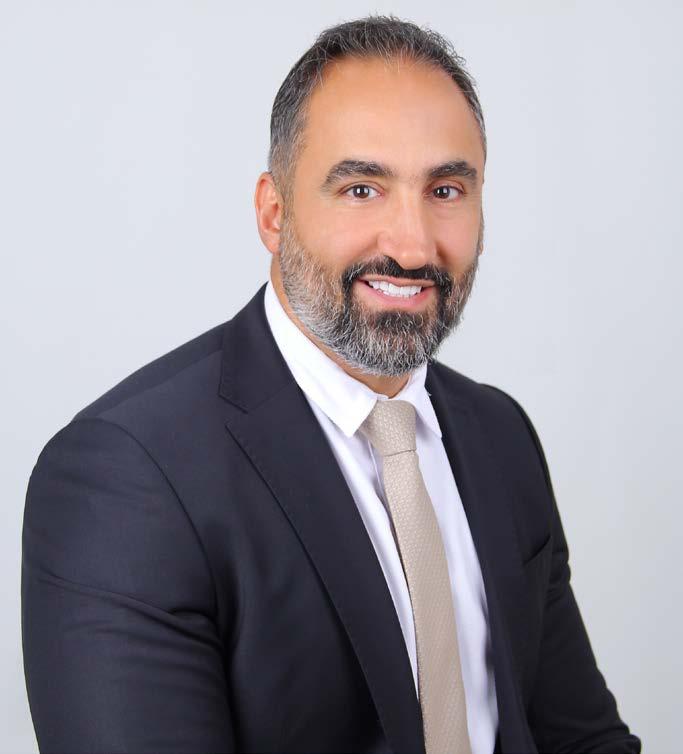
How is Raqmiyat enabling UAE businesses to leverage AI for innovation, efficiency, and longterm competitiveness?
At Raqmiyat, we view AI not simply as a technology layer, but as a transformative force that redefines how businesses operate, compete, and grow. Our approach is deeply consultative and outcome-driven—focused on crafting AI strategies that deliver measurable business impact.
Whether it's streamlining operations, enabling predictive insights, or unlocking new revenue models, we embed AI into the strategic core of our clients’ decision-making processes.
We don’t just implement AI—we co-create future-ready operating models that position our clients as industry leaders. Our mission is to translate advanced AI capabilities into structural business advantages— empowering UAE enterprises to lead, not just adapt, in a rapidly evolving economic landscape. By integrating intelligent systems seamlessly into enterprise ecosystems, Raqmiyat ensures that businesses are not only responding to change but actively shaping the future of their industries.
With rising cyber threats, how is Raqmiyat ensuring that AI adoption across industries in the UAE remains secure and compliant?
Security and trust are foundational to every AI initiative we undertake. At Raqmiyat, we adopt a ‘secure-by-design’ philosophy—embedding robust cybersecurity frameworks into every solution from inception. Our AI deployments are built on zero-trust architectures,
fortified with real-time threat intelligence and continuous monitoring. These systems are fully aligned with UAE’s regulatory and data governance standards, ensuring compliance without compromising agility. Innovation is only sustainable when it’s secure.
At Raqmiyat, we provide the confidence and protection our clients need to innovate boldly while staying resilient against evolving cyber threats.
By harmonizing advanced security protocols with regulatory integrity, we enable enterprises to embrace AI confidently knowing their operations are safeguarded and compliant.
How are Raqmiyat’s BFSI solutions, including NPSS and Open Banking, driving the next wave of digital payments and fintech innovation in the region?
Raqmiyat is at the forefront of reshaping the financial services landscape in the UAE. Our NPSS and Open Banking platforms are not just solutions—they are strategic enablers of speed, transparency, and innovation.
NPSS facilitates real-time settlements, enhancing transaction efficiency and reliability. Open Banking, on the other hand, unlocks secure data sharing, enabling banks and fintechs to deliver hyperpersonalized services and foster new collaboration models. We’re not just delivering technology—we’re helping define the future architecture of financial services in the UAE. Our platforms empower institutions to innovate with confidence and agility.
By combining deep domain expertise with a forwardlooking vision, Raqmiyat enables financial institutions to accelerate digital transformation and meet the evolving expectations of today’s tech-savvy consumers.
What role do AI and cloud services play in Raqmiyat’s strategy to help enterprises in the UAE scale and futureproof their operations?
AI and Cloud are the twin pillars of Raqmiyat’s digital transformation strategy. Together, they provide the agility, scalability, and intelligence that modern enterprises need to thrive in a dynamic environment.
Cloud delivers elastic infrastructure—enabling operational resilience and rapid scalability. AI adds the intelligence layer—driving automation, predictive analytics, and smarter decision-making. This synergy empowers businesses to shift from reactive to proactive strategies.
Our goal is to help clients move beyond digital adaptation to digital leadership. Through strategic adoption of AI and Cloud, we ensure they are architecturally agile, operationally efficient, and future-ready.
By enabling seamless transformation, Raqmiyat positions enterprises to
harness technology as a sustainable driver of growth and competitive advantage. How is Raqmiyat addressing the tech talent shortage in the UAE by combining outsourcing services with AIdriven upskilling initiatives?
Raqmiyat is addressing the UAE’s tech talent challenge through a dual-pronged strategy: immediate capability through strategic outsourcing, and long-term workforce development via AI-powered upskilling.
Our outsourcing services provide rapid access to specialized expertise, bridging critical skill gaps for UAE enterprises.
Simultaneously, we invest in local talent development— using AI-driven platforms to personalize learning paths and accelerate certification in high-demand areas like data science and cloud engineering.
We see talent development as a shared responsibility— meeting today’s needs while building tomorrow’s tech leadership. Our approach strengthens both enterprise capability and the broader UAE tech ecosystem.
By combining tactical resourcing with strategic capability building, Raqmiyat ensures that innovation is both scalable and sustainable— fuelling long-term growth and resilience.
At Raqmiyat, we view AI not simply as a technology layer, but as a transformative force that redefines how businesses operate, compete, and grow.”
CNME Editor Mark Forker spoke to Moninder Jain - VP and Head - Global Emerging Markets, at Logitech, to find out more about how their smart collaboration tools are designed to reduce complexities and simplify everything when it comes to the workplace.
How is Logitech leveraging AI to redefine the future of workplaces and collaboration?
Logitech sees AI as more than just a tool for elevating productivity but also a way to create more equitable collaboration experiences. With our design-led, software-enabled hardware, we use AI to help prioritize the needs and behaviors of people and teams at work. Our AI-powered solutions help deliver seamless collaboration between teams with features like enhanced audio and video, and desk booking services. There are also our personal workspace solutions that help employees get things done no matter where they’re working from.
What advantages do organizations gain by replacing legacy systems with Logitech’s flexible, AI-driven collaboration tools? Our smart collaboration tools are made to reduce the complexities of setting up that came with legacy systems. The goal is to simplify
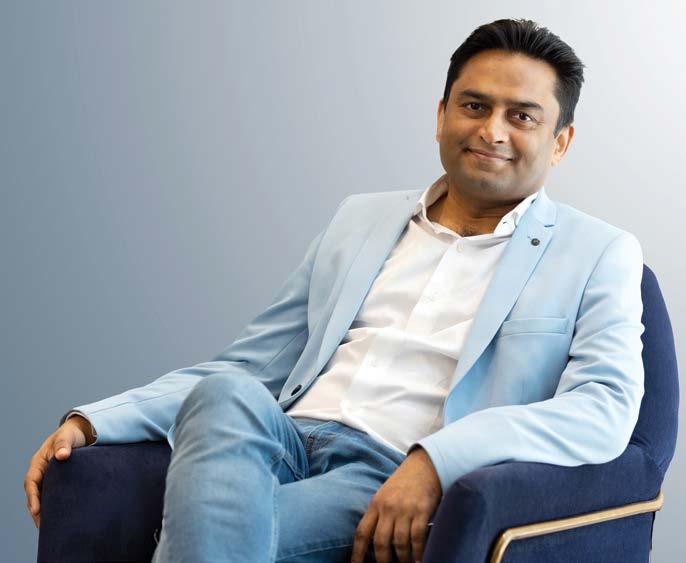
everything: our products support plug-and-play and are certified for global compatibility on popular collaboration platforms. More than ease of use, our products are designed for easy deployment and management, allowing teams to stay productive without interruptions.
How do Logitech solutions help remove barriers between in-office and remote workers to create a more unified work culture?
Logitech’s smart video collaboration tools focus on delivering an equitable experience. With employees working remotely, it is easy to

become a second voice inside a meeting room compared to those who are working onsite. Built-in AI-powered functions on our products, like consistent audio and video, plus features like auto-framing, make remote participants feel like they’re part of the discussion. It levels the playing field and ensures that each team member contributes fairly.
How is Logitech ensuring a consistent and seamless work experience across office spaces and remote locations?
Logitech’s workplace solutions integrate seamlessly with popular video collaboration platforms like Zoom, Google Meet and Microsoft Teams.
As our hardware is plugand-play, teams can ensure that they can immediately
start using our devices without the hassle of complicated setups. Our products also support cloud-based device management, so users can easily migrate their settings to any device that they use without the need to reconfigure every setting. These features allow for a more consistent workflow across any office location.
How does workplace technology directly shape employee productivity, engagement, and overall performance?
Technology used in workplaces defines how employees communicate and collaborate. Tools that enable a seamless workflow make employees more productive as they reduce downtime and even minimize fatigue, allowing employees to be more engaged.
Our solutions aim to remove the barrier between remote and on-site workers, and when they feel seen and heard, it can directly impact their work productivity in a positive way.
How are Logitech’s sustainability goals driving innovation and contributing to a more inclusive and responsible future of work?
Sustainability is a core aspect of Logitech’s product design. This is evident in our products that use lower-impact materials and components and use responsible packaging.
As we aim to remove more carbon than we create by 2030, we create products that would not just benefit people but also the planet.
Our efforts help organizations meet their sustainability goals and allow for a more accessible and inclusive workplace environment.
The goal is to simplify everything: our products support plug-and-play and are certified for global compatibility on popular collaboration platforms.”
CNME Editor Mark Forker, spoke to Mohit Bector, Commercial Head – UAE and GCC, at ASUS Business, to find out what the primary factors are behind their double-digit growth over the last 12 months, their success in industry verticals beyond education, such as the enterprise and public sector space – and the transformative impact AI is having on the education ecosystem globally.
How has ASUS performed during the first half of 2025 in the Middle East?
We’ve seen double-digit year-on-year growth in the Middle East, and 2025 is no exception. It’s a consistent momentum that was made possible with our expanding line-up of device solutions tailored for sectors that include education, government and enterprise.
Which sectors have seen significant growth so far?
As ASUS, we have been focused on the education vertical with a dedicated line-up, understanding the customer challenges and needs. Apart from education, the public sector and a few enterprise verticals have shown new logo acquisitiondriven growth in the first half. While the education and public sectors have been delivering consistently over the past few years, the enterprise sector push is largely due to our increased portfolio offerings.
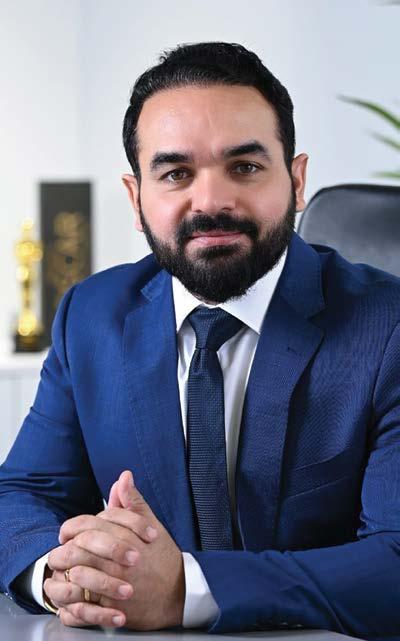
We’ve also focused on delivering more Chromebook devices this year, as we forecast strong growth in this category over the next couple of years.
How do you see the role of ASUS evolving in the region as governments and businesses accelerate their digital agendas?
ASUS has been known for its focus on innovation. We aim to provide technology solutions that combine great functionality with realworld usability.
For our government and enterprise partners, this means offering products and services that are not only state-of-the-art but also reliable, scalable, and meet their long-term goals.
As digital transformation speeds up in the government and enterprise sectors, ASUS is ready to be a strategic partner. We provide the right technology, support, and innovative thinking needed to meet future demands.
How is ASUS supporting technology adoption among government organizations and enterprises in the region? When it comes to our products, ASUS designs devices with

durability and performance for businesses in mind.
Features like spill-resistant keyboards, military-grade testing, 100% solid capacitors, and modular, upgradeable components show our commitment to reliability and total cost of ownership.
These are important factors for public sector deployments and enterprise IT systems. In terms of service and support, ASUS provides up to 5 years of warranty, international warranty coverage, and reliable after-sales support. These programs ensure continuity and responsiveness for organizations with critical operations.
How is ASUS building partnerships with public and private sector entities to drive innovation and long-term value?
On the innovation side, ASUS was one of the first to
offer AI-powered computing solutions in collaboration with Intel.
This led to smarter and more efficient workflows in areas like education, healthcare, defense, and government administration.
Sustainability is also a key part of our strategy.
AI is now the main driving force in delivering high-quality education in schools without being limited by physical infrastructure.”
ASUS is dedicated to reaching carbon neutrality and net-zero emissions by 2050. We have already launched environmentally friendly product lines that focus on energy efficiency, recyclability, and sustainable materials. We also partner with government agencies
on green tech initiatives to support national sustainability goals.
In your view, which sector has seen the most impact from AI adoption?
Here in the Middle East, especially in the UAE, we’ve seen AI become an integral part of most industries, and education has felt its impact most strongly.
AI is now the main driving force in delivering highquality education in schools without being limited by physical infrastructure.
While AI as a subject has been made mandatory in UAE schools across grades, and more AI apps are being implemented in the learning curriculum, it is also imperative to have comprehensive training programs for teachers to ensure synergy in adopting this technology effectively.
Commvault
Lena Halbourian, Senior Regional Head of Marketing Switzerland, Austria, SEE, Middle East & Africa, at Commvault, spoke to CNME Editor Mark Forker to discuss her career to date, the role AI is going to play in the continued evolution of marketing – and her advice to women thinking about pursuing a career in technology.
Lena Halbourian is one of the most respected marketeers in the IT industry across the Middle East.
In a stellar career, she has worked for tech behemoths such as IBM, HPE and Citrix, before joining Commvault in 2021.
Her star has continued to rise since making the move to Commvault, and in a candid conversation with CNME Editor Mark Forker, she documented her journey in marketing and how the role has changed since she first entered the field over 20 years ago.
How did you get started in marketing and what has your journey been like leading up to your current role?
Given that I studied advertising at university, my initial goal was to work in an advertising agency.
But when I moved to Dubai several years ago, I was approached for a marketing position, and that’s how my career and my passion for marketing began.
What started as an
unexpected opportunity turned into a fulfilling journey where I’ve been able to combine creativity, strategy, and communication in ways that continue to inspire me every day.
In a fast-evolving, highly technical industry like technology, how do you see the role of marketing?
In a fast-evolving, highly technical industry, marketing plays a crucial role in translating complex innovations, especially in the AI era, into clear, compelling value for customers.
It bridges the gap between technology and understanding by simplifying advanced concepts, building thought leadership, and positioning the company as a trusted authority in AI and cyber resilience.
Marketing must be agile and data-driven, personalize engagement, and optimize strategies.
Ultimately, it connects innovation to impact, driving awareness, trust, and growth in a rapidly changing landscape.
With AI, data and digital transformation shaping the industry, how do you think the future of marketing in tech will evolve?
The future of marketing in tech will be all about using AI and data to understand people better and create more personalized experiences. Marketing will become faster, smarter, and more tailored — but the key will be keeping it real and human, using technology to support creativity, not replace it.
Technology is a great equalizer - removing barriers of gender, geography, time, and access. With AI, cloud, and SaaS reshaping the way we work, collaborate, and learn, it is imperative to continue fostering culture where everyone can thrive.”

As a woman leader in tech, what has your experience been like? What challenges have you faced in marketing and what changes would you like to see in the industry?
My career in marketing has grown alongside the UAE’s incredible evolution into a global tech hub. Women in technology are building a future where trust fuels innovation and resilience drive progress.
At Commvault, we view technology as a catalyst for change, and this is exemplified
by our leadership team, with investment into the next generation of leaders - from engineers, sales, and HR to marketing, finance, legal, and our talented security teammates.
Technology is a great equalizer - removing barriers of gender, geography, time, and access. With AI, cloud, and SaaS reshaping the way we work, collaborate, and learn, it is imperative to continue fostering culture where everyone can thrive.
With GITEX being such an important platform for technology brands, how are you planning to leverage it to strengthen your brand’s presence and messaging?
At GITEX, we’re focused on amplifying Commvault’s position as a leader in cyber resilience. We’ll showcase our latest innovations like Commvault Cloud Cleanroom Recovery and Cloud Rewind through live demos and masterclass sessions to demonstrate real business impact.
The event is also a key opportunity to strengthen relationships with regional partners, engage with media, and highlight how Commvault helps enterprises across the Middle East recover rapidly in a multi-cloud era.
For those just starting out in tech marketing or aiming for leadership roles, what advice would you share from your experience?
For those starting out in marketing or aspiring to lead one day, the key is to stay endlessly curious about the product, the customer, and the people behind both.
Great marketers take the time to understand how their solutions make someone’s work easier or their business stronger.
They use data to guide decisions but never lose sight of the human story behind the numbers.
They build genuine relationships across teams, knowing that true impact comes from collaboration.
Padam Kafle, Head of Operational Technology, Innovation and Automation
Healthcare at Aster Hospitals – UAE and Oman, has written a terrific op-ed, in which he details how he is on a mission to rewrite the DNA od the healthcare industry, by leveraging the capabilities and power of ‘superintelligence’.
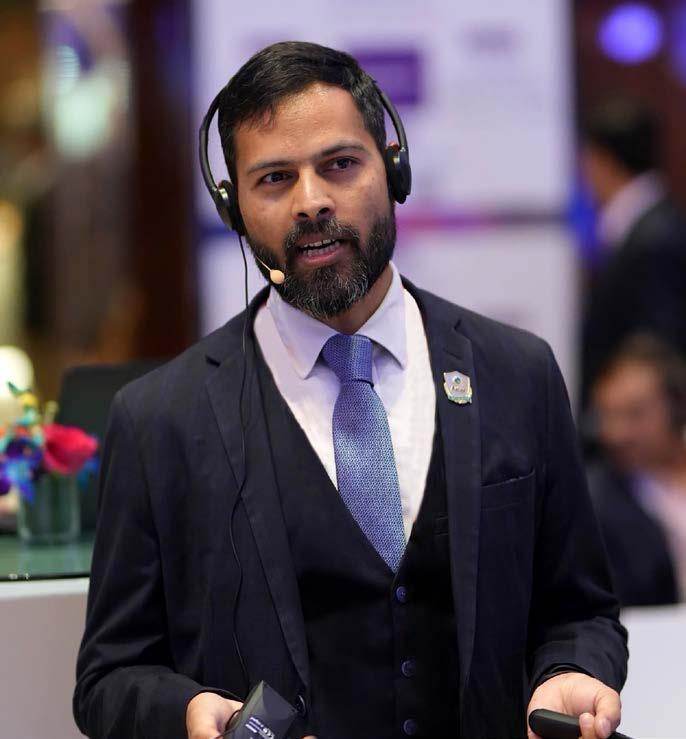
Healthcare today feels like a battlefield fought with yesterday’s weapons. Hospitals drown under rising cases of chronic disease. Doctors spend more time buried in paperwork than listening to patients.
We wait for illness to strike before we act — and then scramble to fix what could have been prevented.
I believe that this crisis is not just medical, but systemic. And my solution to the problem has been described by some as bold.
I believe that it is time to replace reactive ‘sick care’ with a healthcare architecture powered by Machine Superintelligence — a system that thinks ahead, adapts continuously, and serves every human, no matter where they are.
The AlifZetta Vision: Building Healthcare That Thinks

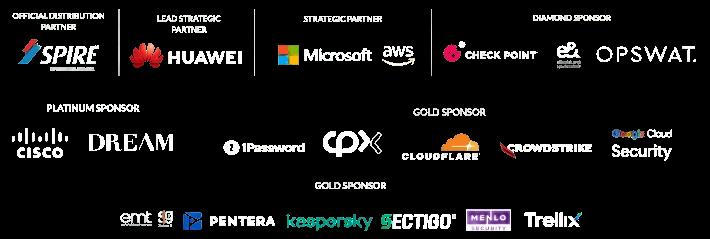
My initiative entitled, AlifZetta Superintelligence, doesn’t see healthcare as hospitals, doctors, or insurance. It sees it as a living, intelligent organism that must learn, predict, and evolve.
Its pillars break radically from the old model:
• Predictive: Spotting risks years before disease manifests.
Adaptive: Treatments that shift dynamically with new data.
Decentralized: Giving even a rural clinic the decision power of a world-class hospital.
• Autonomous: Freeing doctors from routine drudgery so they can focus on patients, not screens.
• Modular: Designed like Lego blocks, so any country can adopt it piece by piece.
This is not a gadget or an app. It is a blueprint for an entirely new era of medicine.
The seeds of this future are already sprouting:
• Drug discovery accelerated from years to months.
• Diagnostics that see what the human eye cannot.
• Wearables and data streams that whisper warnings long before the first symptom. Each of these breakthroughs is a fragment. Superintelligence stitches them into one seamless fabric.
For me, technology is not the story’s hero — people are.
We must rail against a future where machines dictate and humans obey.
Instead, we need to produce tools that amplify compassion: giving doctors more time to comfort, explain, and heal.
Superintelligence should be the quiet partner in the room. The doctor still looks you in the eye. The system just makes sure the doctor has every insight, instantly.
In healthcare, trust is oxygen. Lose it, and no innovation survives.”
Every revolution meets resistance. Healthcare has more than its share: entrenched workflows, budget fears, professional skepticism. My playbook for overcoming this is not just technical but cultural:
• Educate relentlessly.
• Involve patients, not just providers.
• Redesign workflows from the ground up instead of bolting AI onto broken systems. Adoption is about trust more than technology.
THE ETHICS
Powerful intelligence without ethics is dangerous. I believe in four safeguards:
1. Fairness — no biased data.
2. Privacy — health data treated like sacred ground.
3. Transparency — no black boxes; every decision must be explainable.
4. Accountability — humans remain responsible, even if machines suggest. In healthcare, trust is oxygen. Lose it, and no innovation survives.
Here are some of my predictions for what will reshape medicine in the next five years more than the last fifty: Unified data from genetics, scans, and lifestyle woven into a single health map.
• Care plans that evolve daily, tailored to each person like a fingerprint.
• Generative intelligence that drafts notes, translates complex diagnoses into plain language, and helps clinicians make faster, sharper calls.
The prize? Patients who live longer, healthier lives and systems that sustain themselves without collapsing under cost. Superintelligence is coming, whether the world is ready or not. My mission is to make sure it arrives in service of life, dignity, and wellbeing.
Healthcare today treats disease. My vision? A world where healthcare prevents it — where technology makes us healthier not just by saving lives, but by enriching them. Because the true success of medicine is not survival. It is thriving.







